Skoda Enyaq facelift: moderate updates to technology and design
Following the end of production of the Citigo small electric car, the Enyaq was the only electric model in the Skoda portfolio for a long time – and thus, unsurprisingly, the brand’s best-selling electric car. With the Elroq and the upcoming Epiq, the competition within the brand is growing significantly, which is why the Enyaq has now been given a major update. A completely new successor is not due to debut until 2028 – presumably based on the new SSP electric platform.
In terms of drive technology, Skoda will stick to VWs MEB modular system and use the latest technology. However, the changes are actually minor, as the Enyaq already received the new drive generation with the APP550 for the 2024 model year. What is surprising: Skoda continues to state a gross energy content of 82 kWh and a net energy content of 77 kWh for the facelift version with the large battery. Skoda is not using the 79 kWh battery known from some VW ID. models, nor the 86 kWh battery from the ID.7 Pro S or ID. Buzz with a long wheelbase. The 77 kWh battery can be charged with up to 175 kW – but only in the all-wheel drive model. Skoda still specifies 135 kW for the rear-wheel drive with the large battery. Nevertheless, charging from ten to 80 per cent should take 28 minutes in both cases. The Enyaq 60 is even slightly faster at 24 minutes and 165 kW at its peak. The 86 kWh battery from the ID.7 Pro S or ID. Buzz with a long wheelbase is still not available from Skoda.
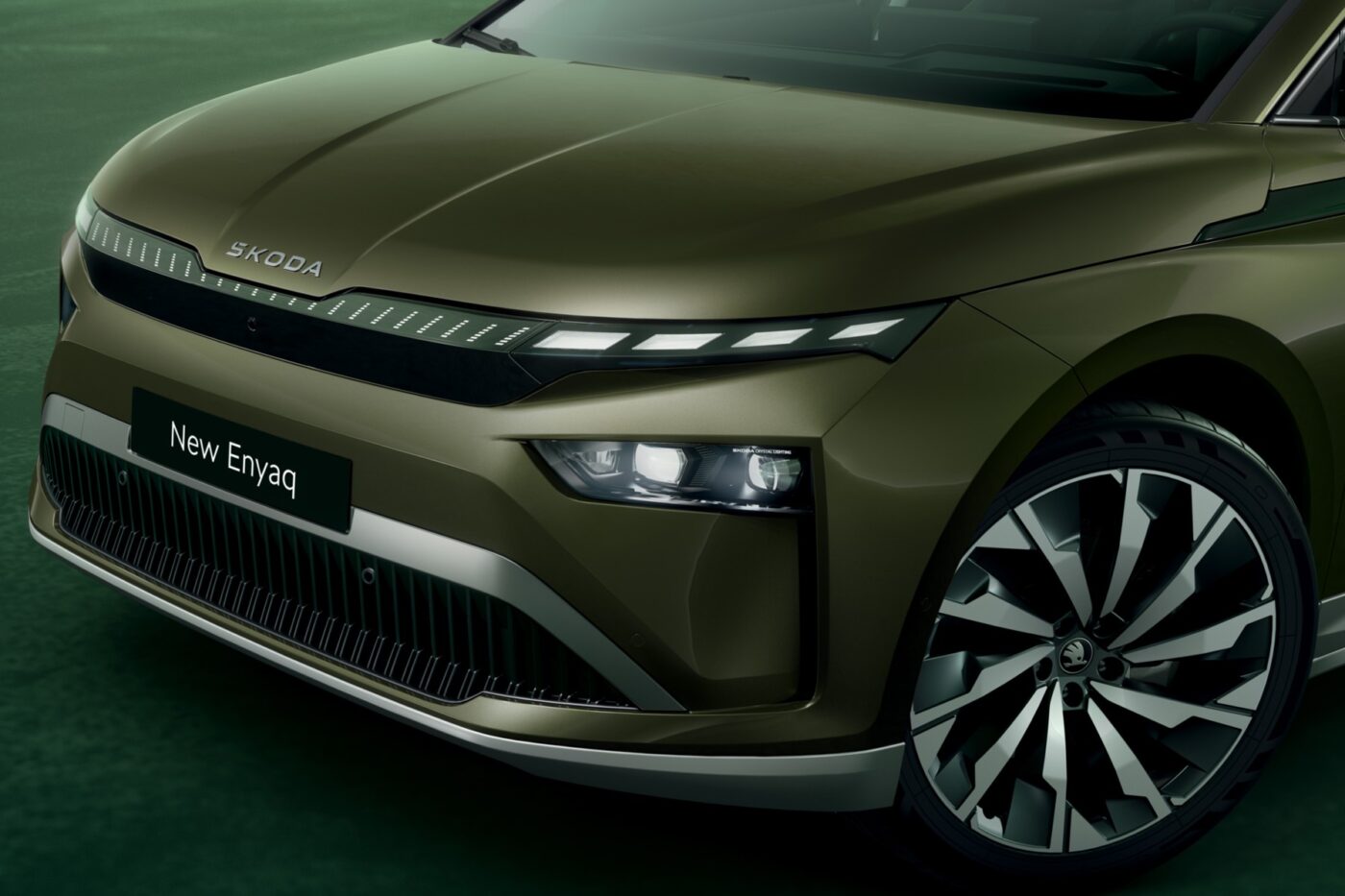
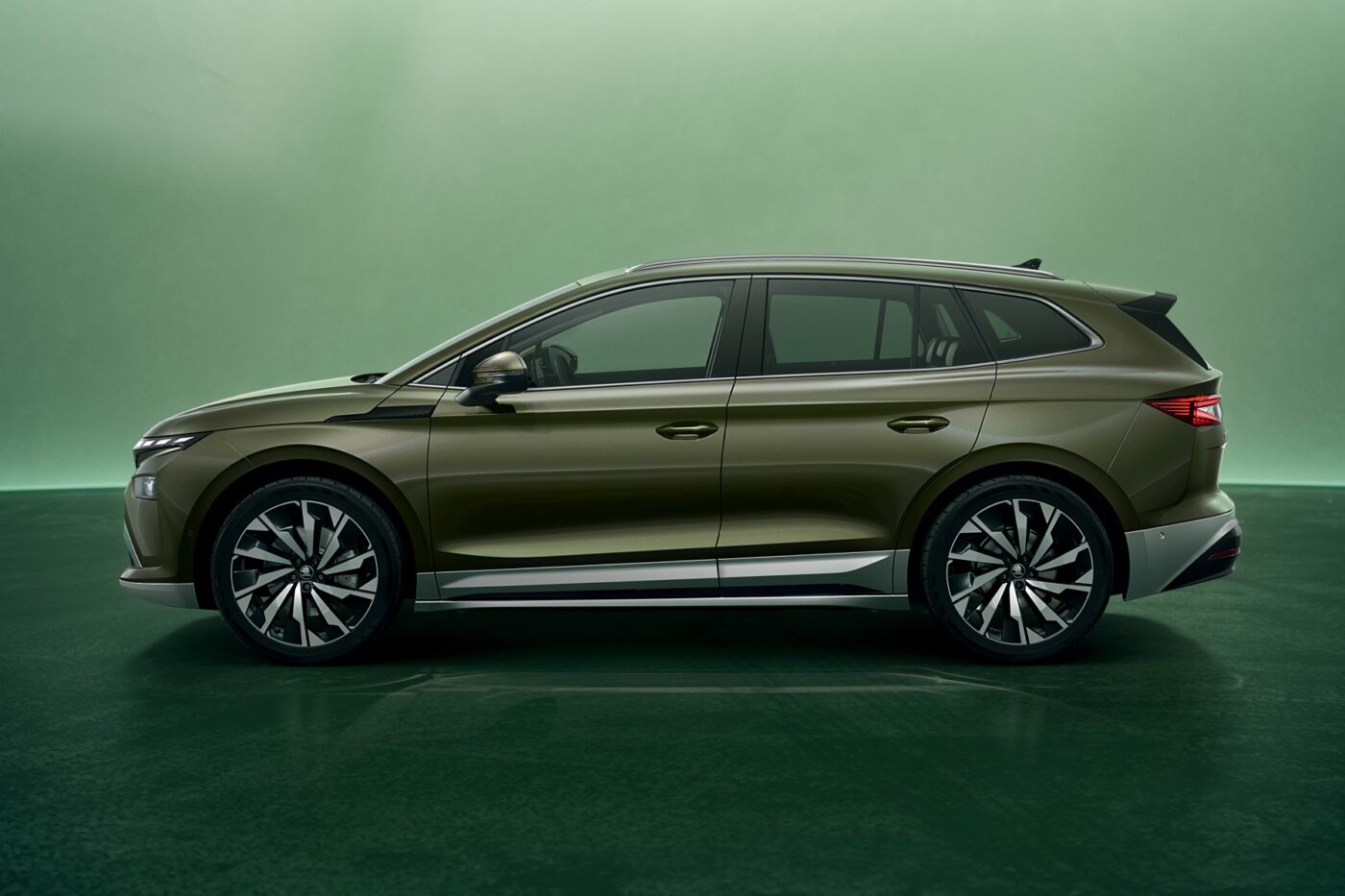
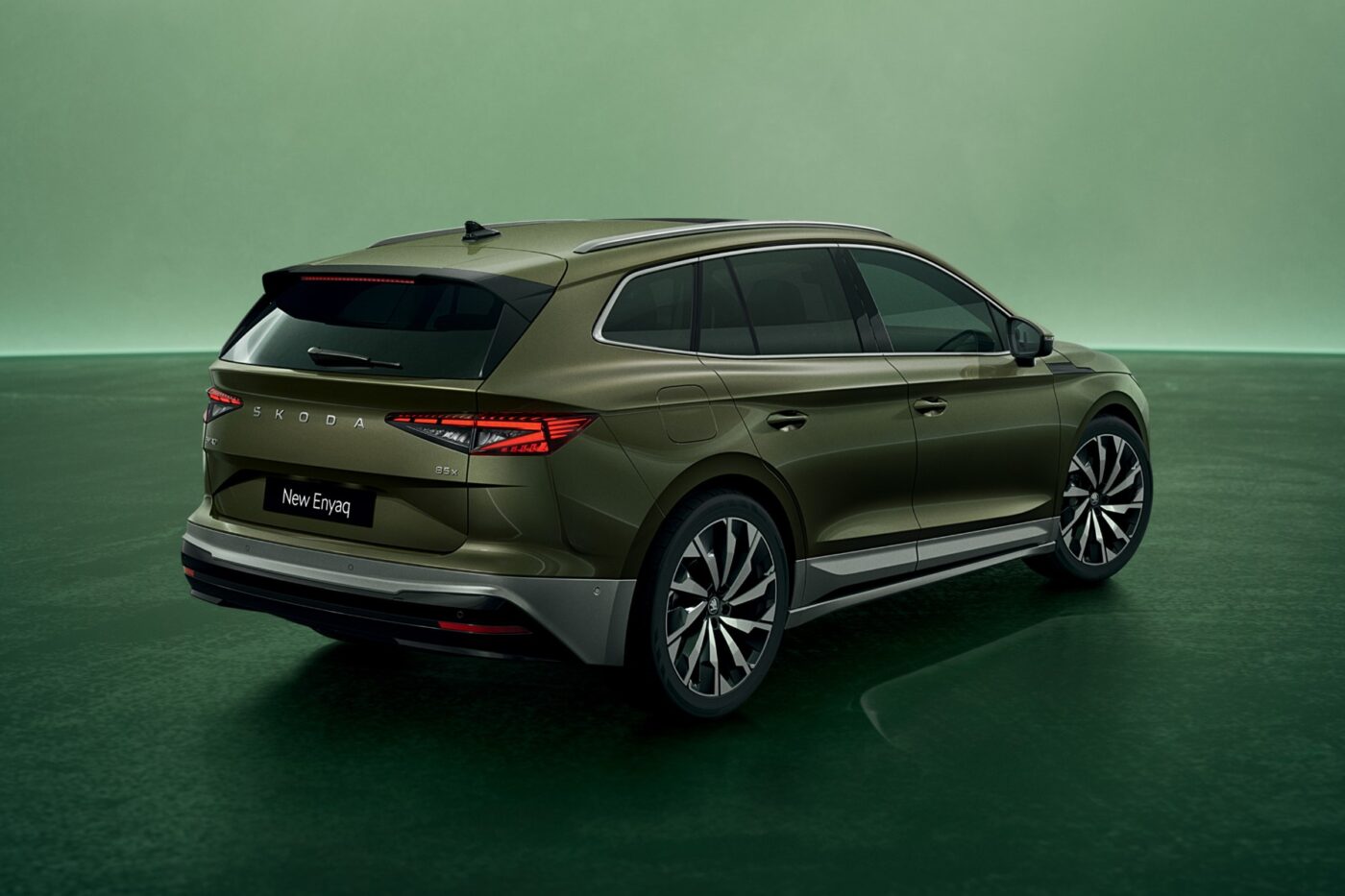
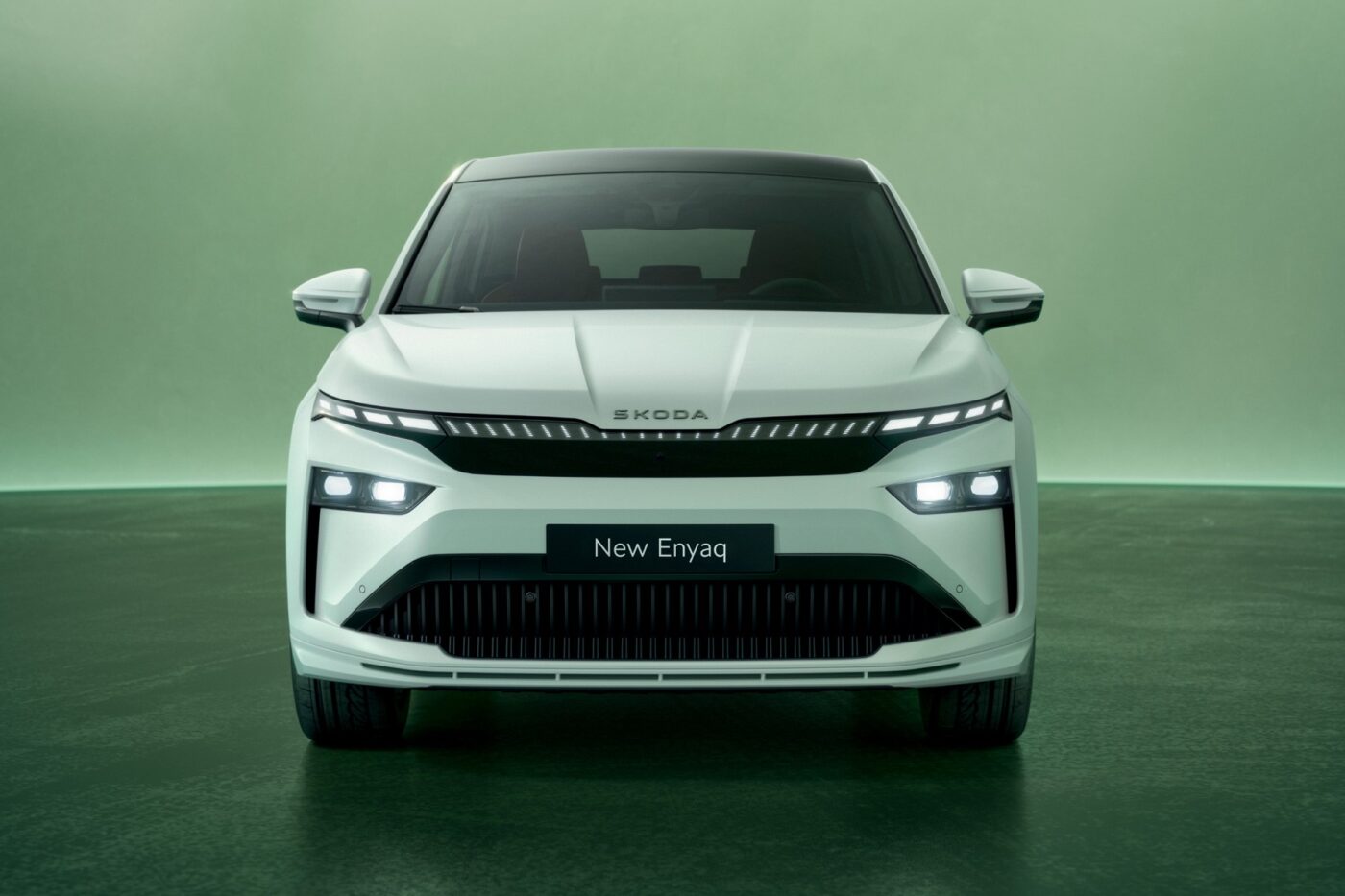
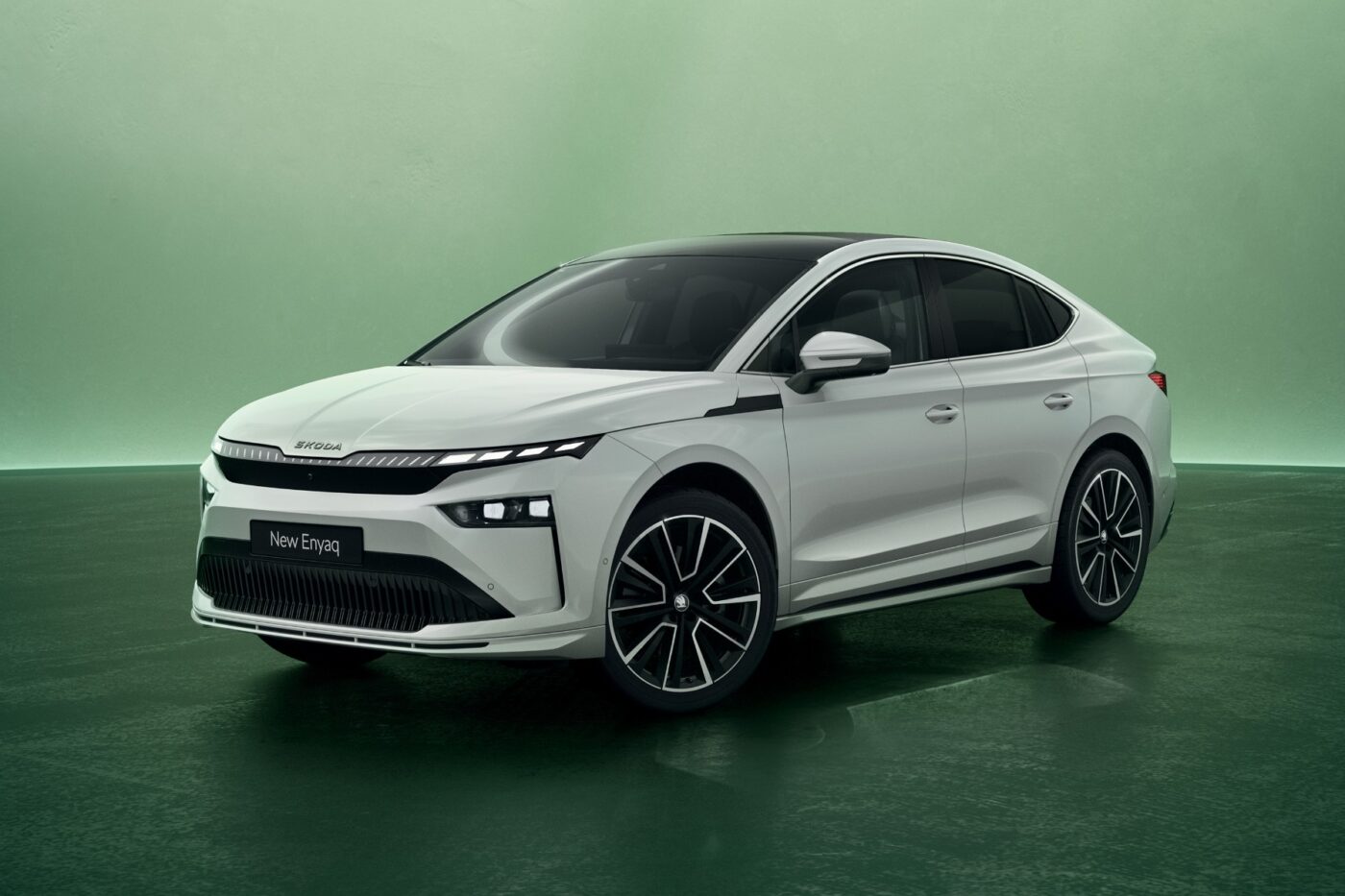
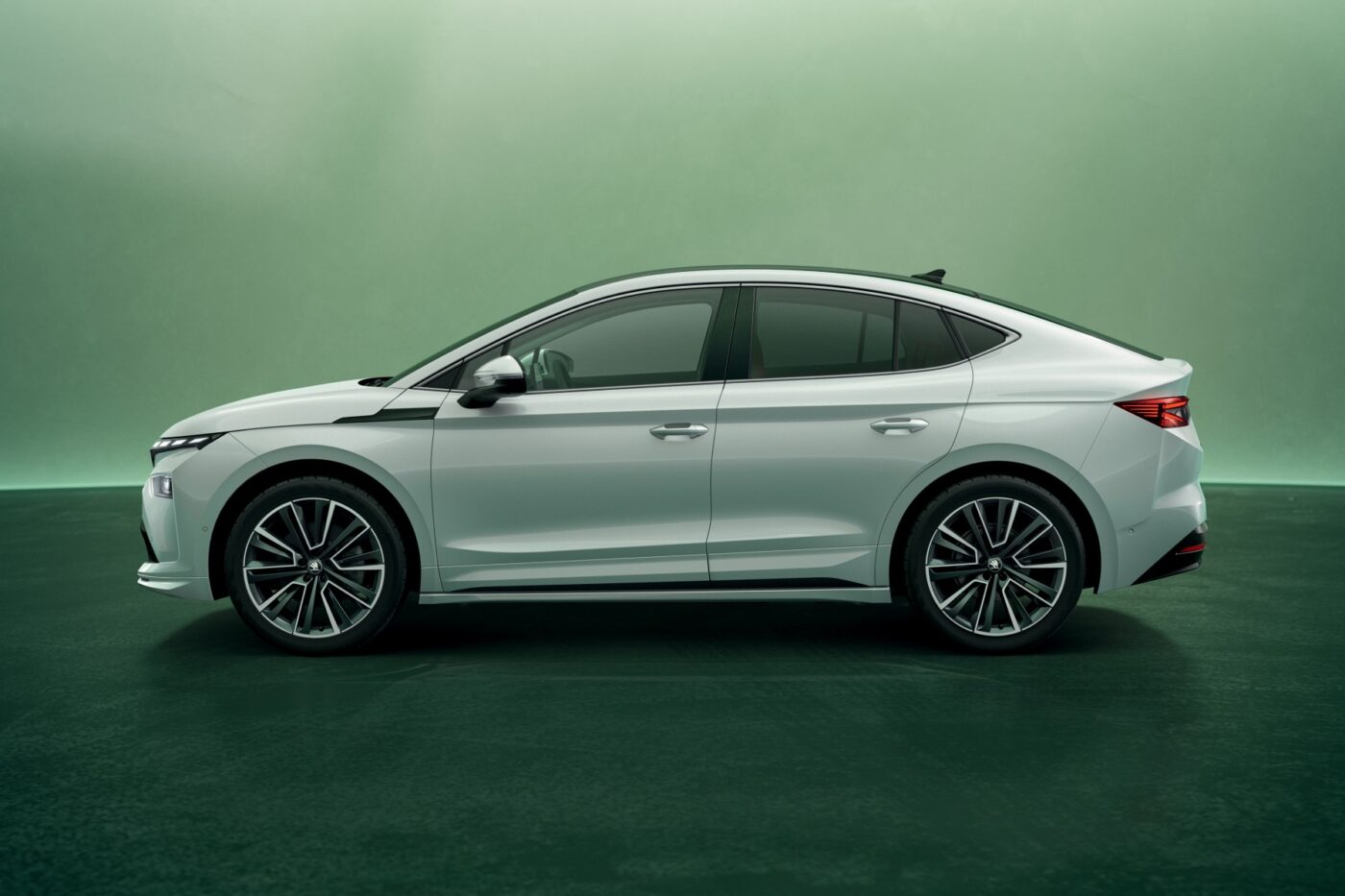
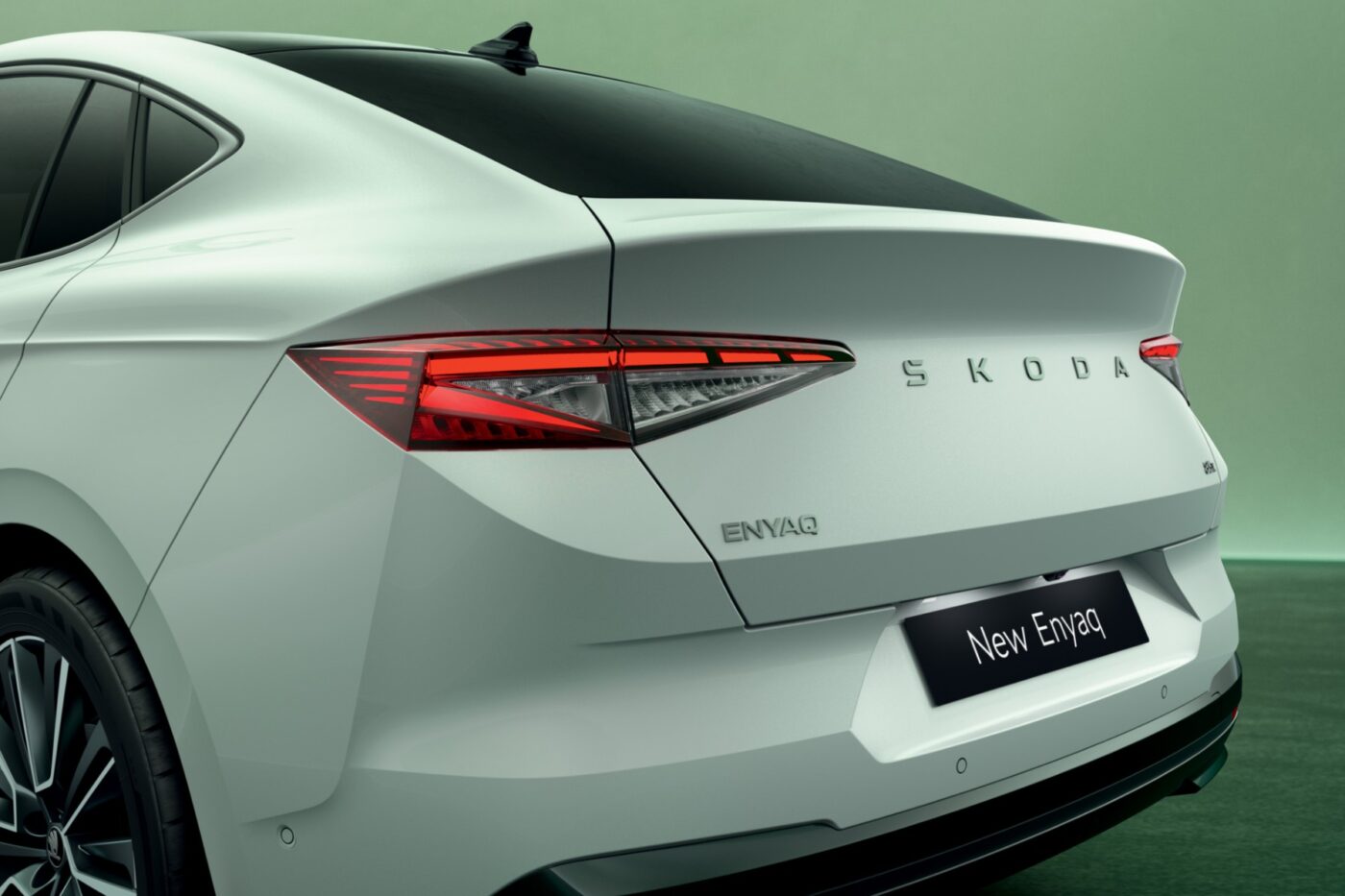
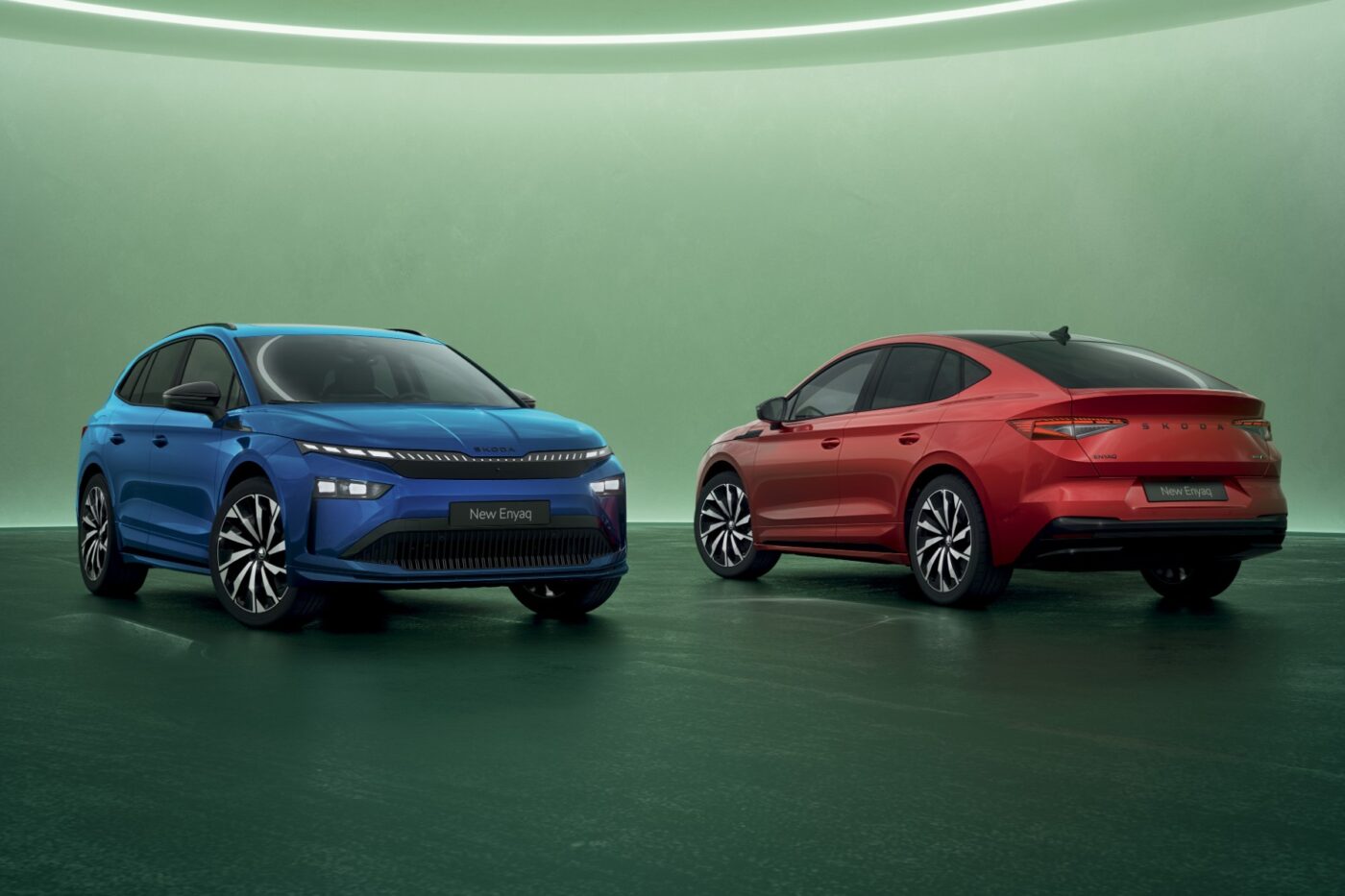
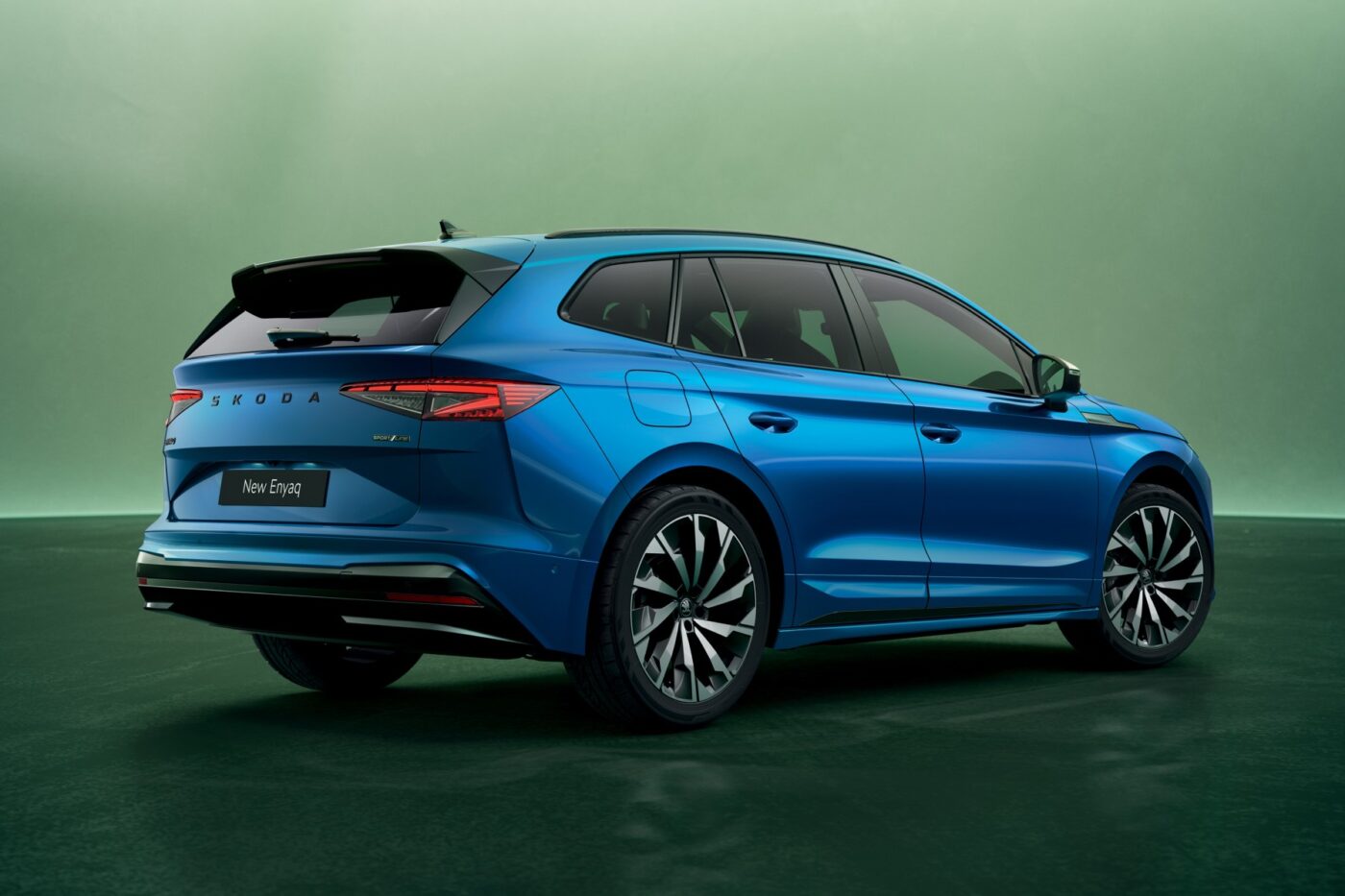
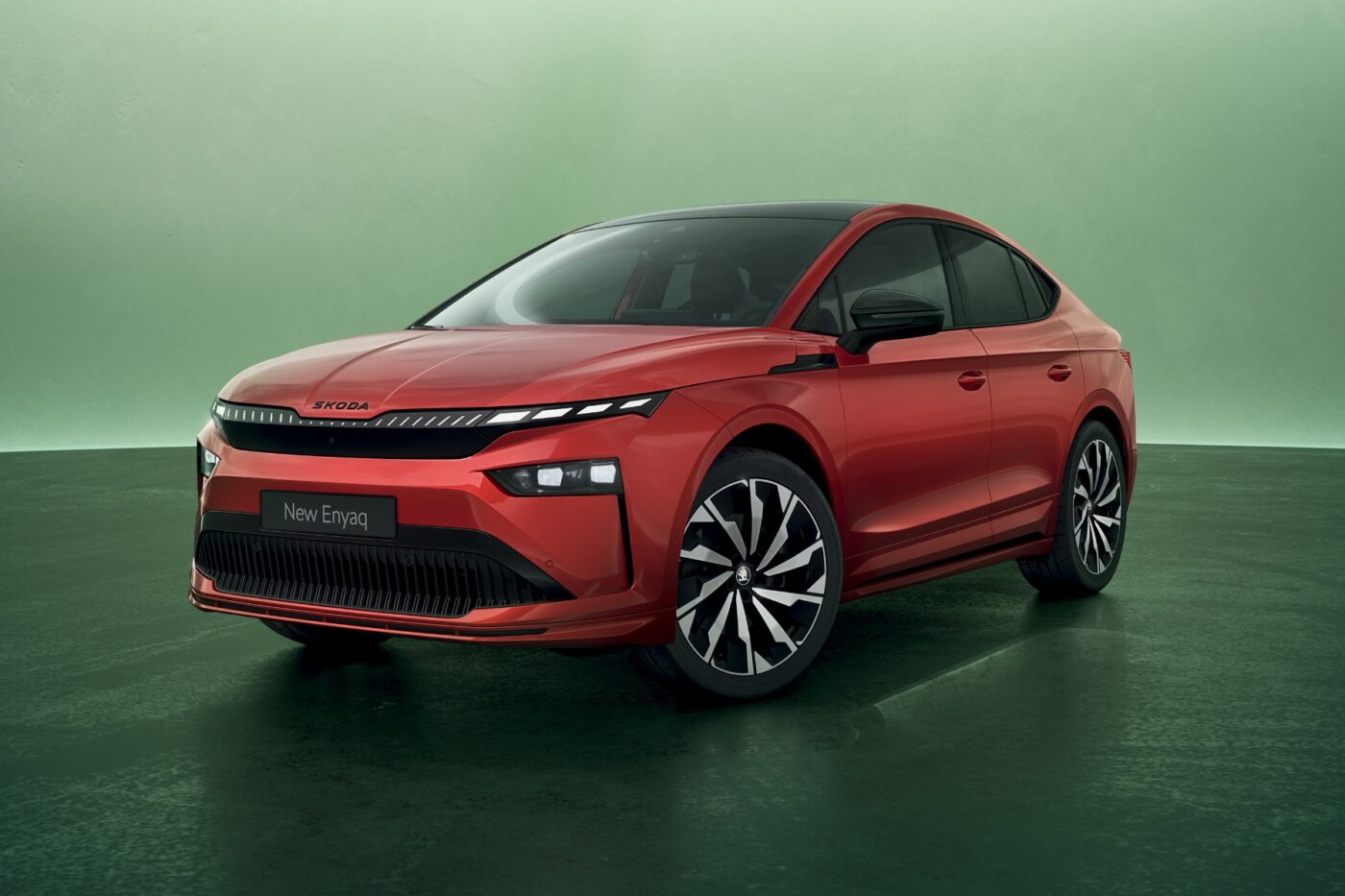
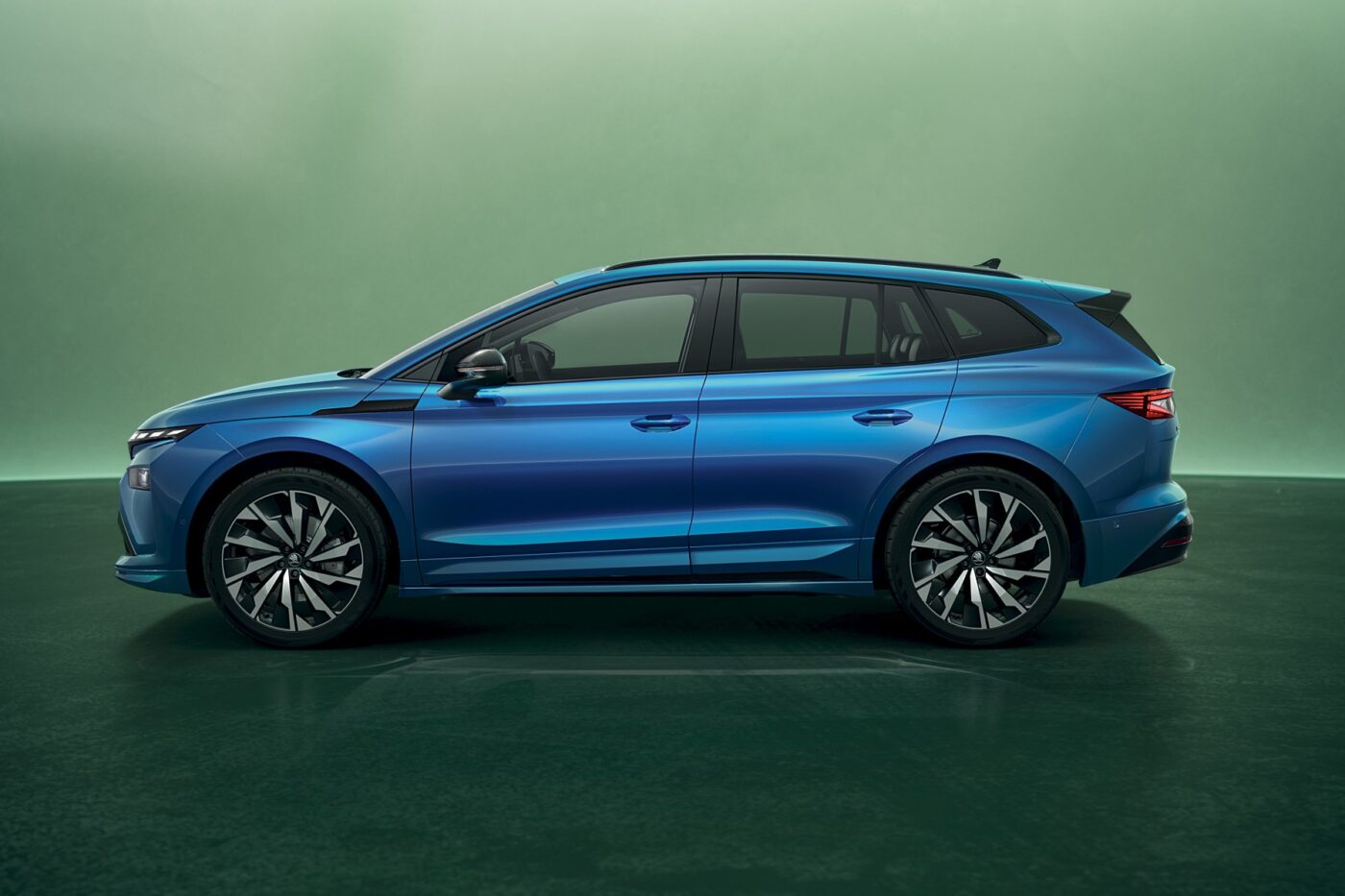
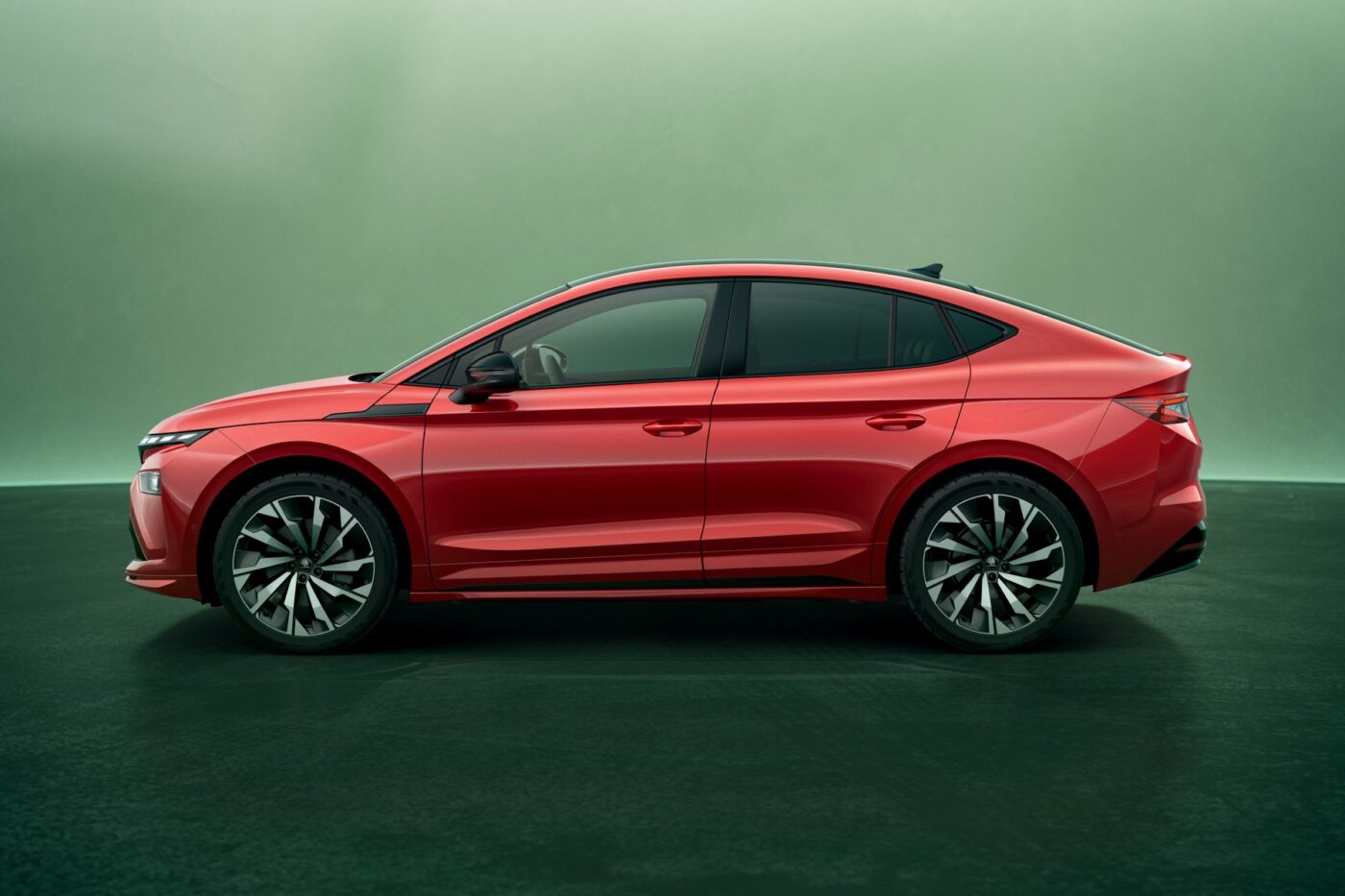
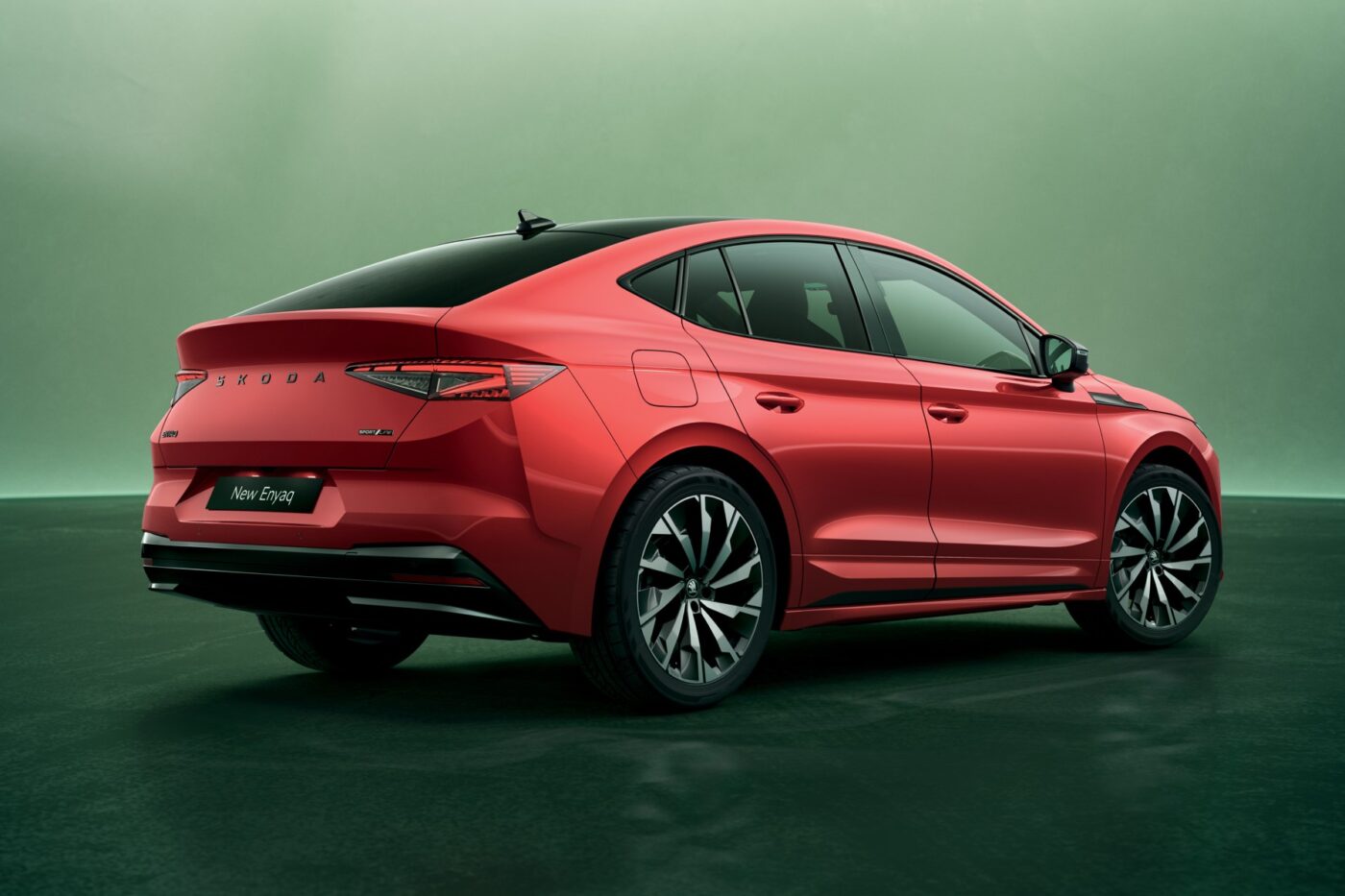

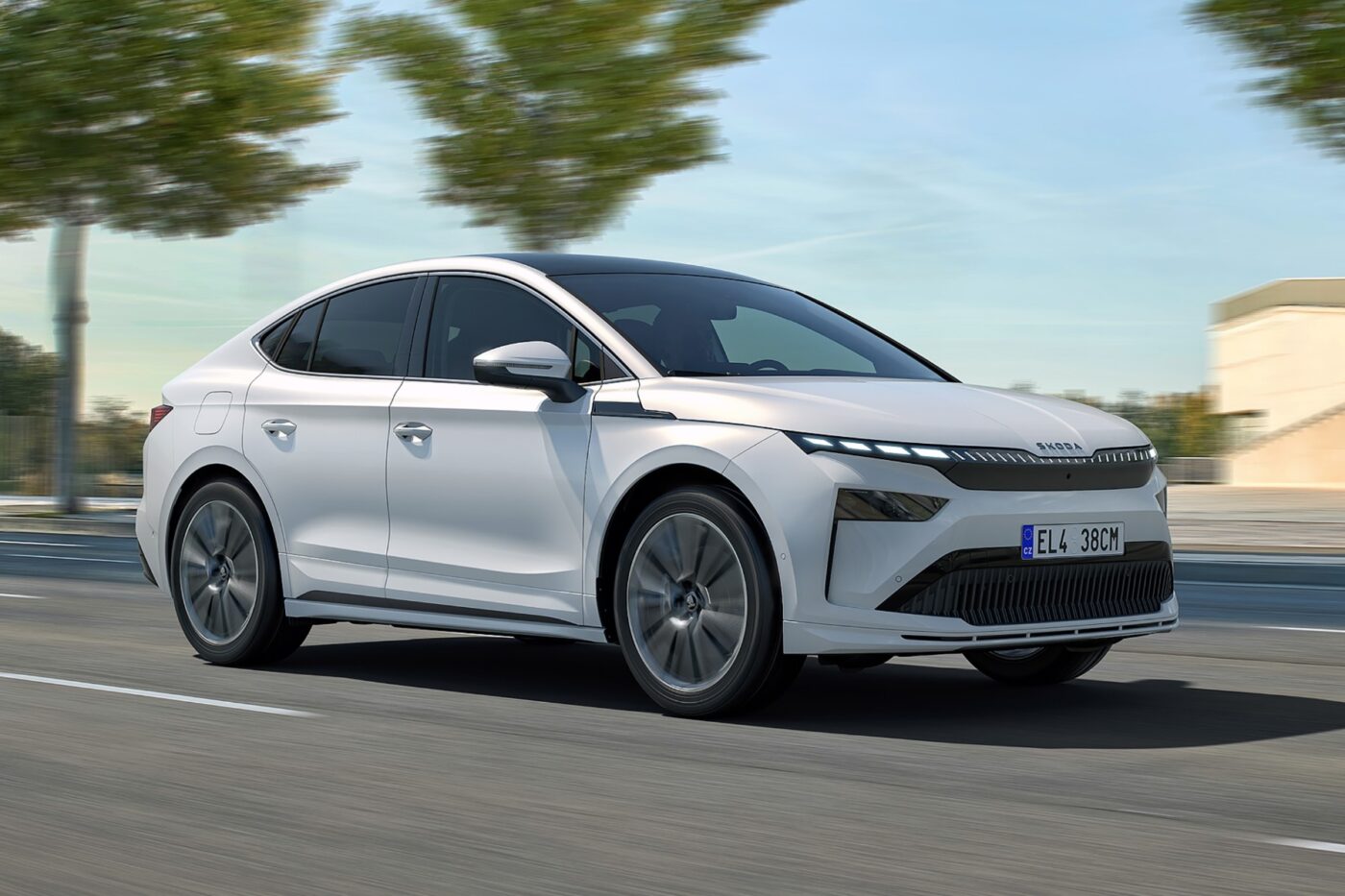
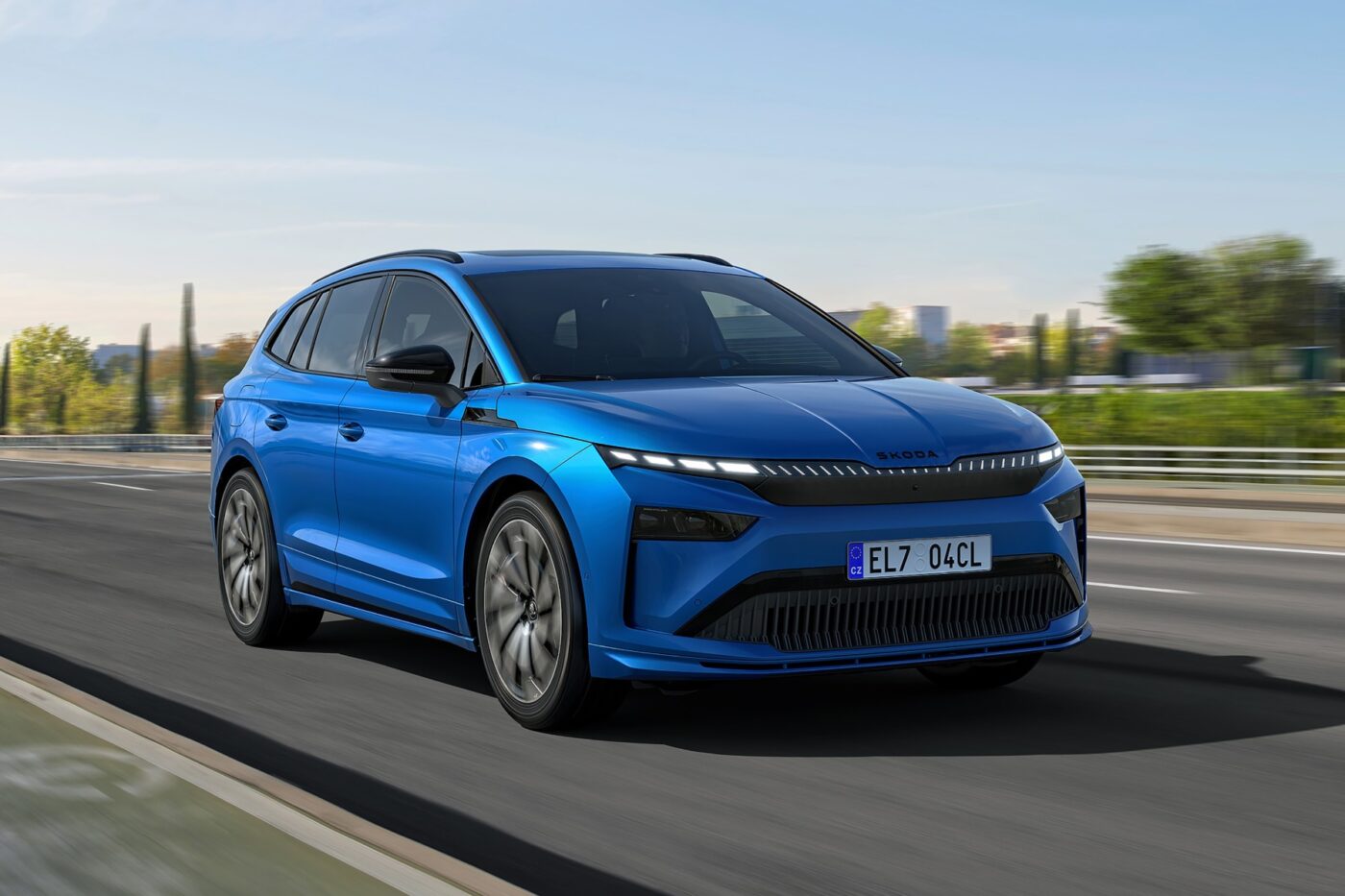
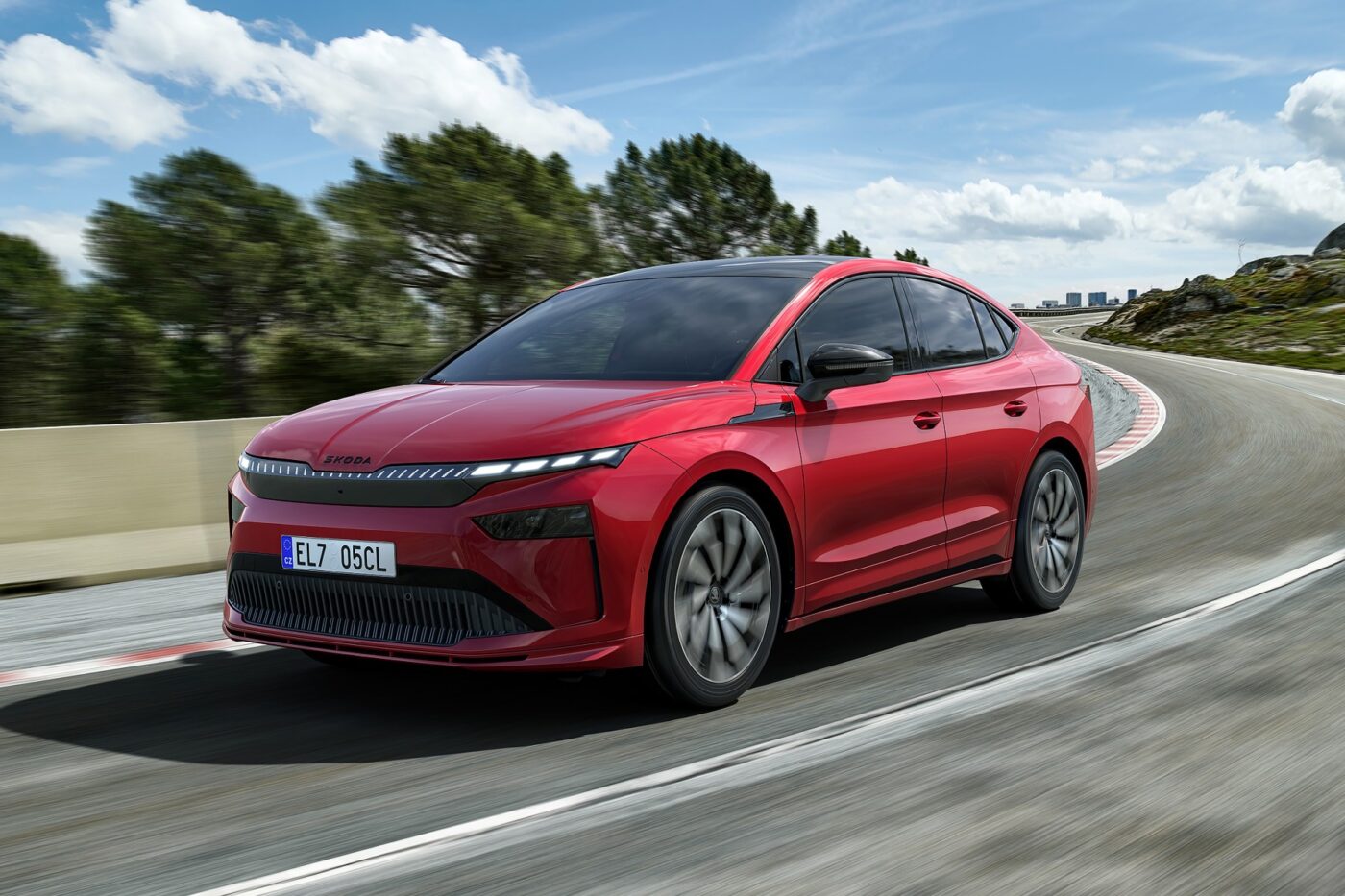
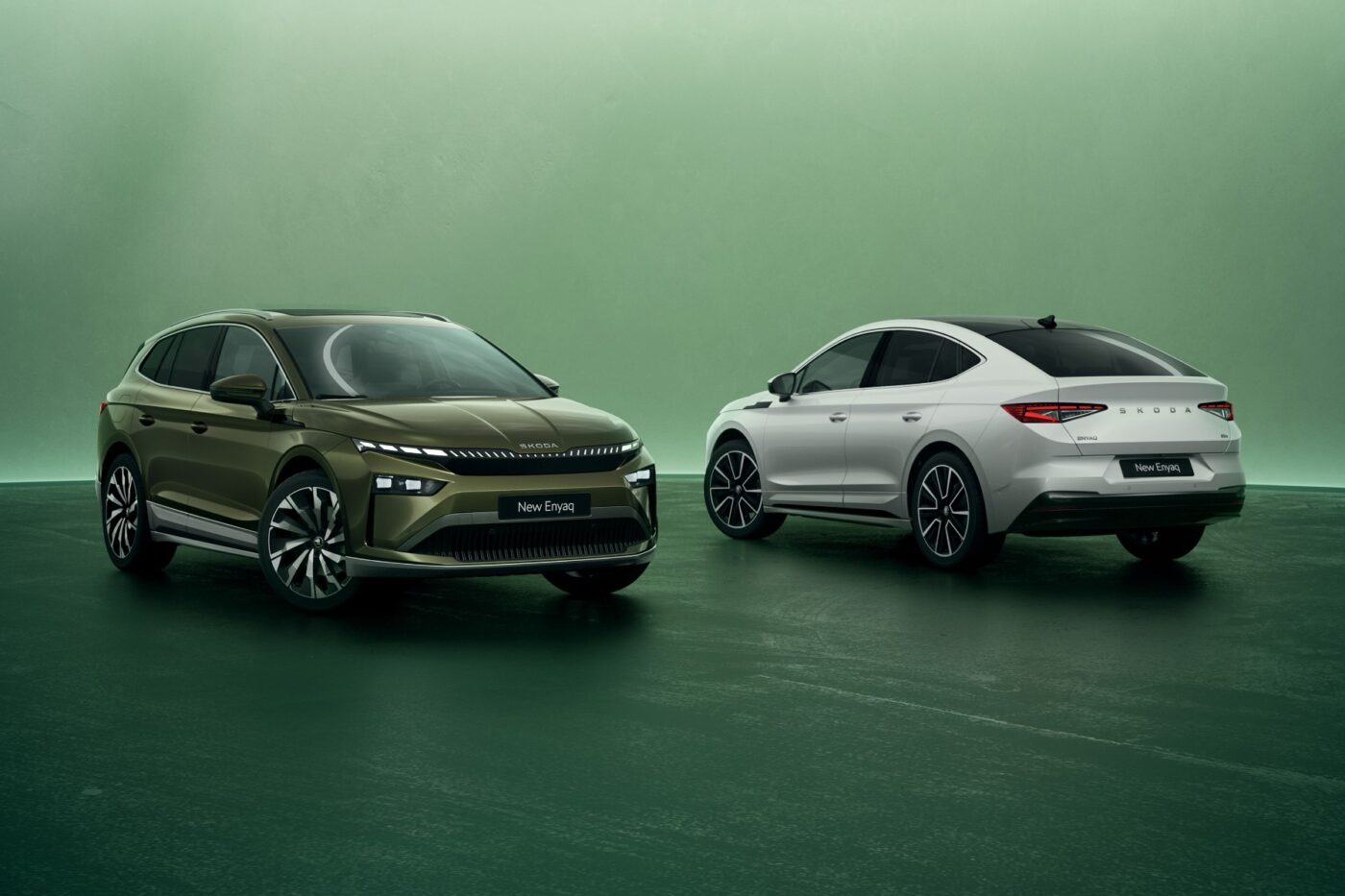
Nevertheless, range has increased, as Skoda emphasises – to up to 586 kilometres for the Enyaq and over 596 kilometres for the Enyaq Coupé (both according to WLTP). These figures apply to the 210 kW version with rear-wheel drive, recognisable by the designation 85. There is also the Enyaq 60 with a range of 437/446 kilometres and the all-wheel drive version 85x with 549/558 kilometres – the coupé can travel around ten kilometres further in each case. However, the Enyaq 60 will be equipped with the new battery generation, with the 58 kWh storage unit being replaced by the 59 kWh version.
The longer range is not only due to the slightly larger battery, but primarily to the optimised aerodynamics; the front end has been redesigned in the style of the ‘Modern Solid’ design language. It means that the large, closed radiator grille, which previously provided a look similar to that of a combustion engine, is now significantly narrower. Skoda refers to this as the ‘Tech-Deck Face,’ as numerous sensors are integrated into this unit. According to the carmaker, this results in a drag coefficient of 0.245 for the Enyaq and 0.225 for the Enyaq Coupé, making it the most aerodynamic model in the Skoda range.
| Enyaq 60 | Enyaq 85 | Enyaq 85x | |
|---|---|---|---|
| Drive | RWD | RWD | AWD |
| Output | 150 kW | 210 kW | 210 kW |
| Acceleration | 8.1 s | 6.7 s | 6.7 s |
| Top speed | 160 kph | 180 kph | 180 kph |
| WLTP range | 437 km | 586 km | 549 km |
| Battery | 63/59 kWh | 82/77 kWh | 82/77 kWh |
| Charging capacity DC | 165 kW | 135 kW | 175 kW |
| Charging time DC 10-80% | 24 min | 28 min | 28 min |
| Price | – | – | – |
Regardless of the body shape, the headlights will be split in two, with the slim upper element merging seamlessly into the wings – the front design with 36 LED elements is striking. Another new feature is that the brand logo on the bonnet has been replaced by Skoda lettering.
The changes to the sides and rear are significantly smaller, with new wheel rim designs, for example. From the outset, the Enyaq had the Skoda lettering on the boot lid instead of the brand logo. And the familiar rear lights remain virtually unchanged. However, the new Enyaq does not have a continuous LED strip, as offered by the new Elroq and also introduced by Skoda in the Kodiaq electric SUV.
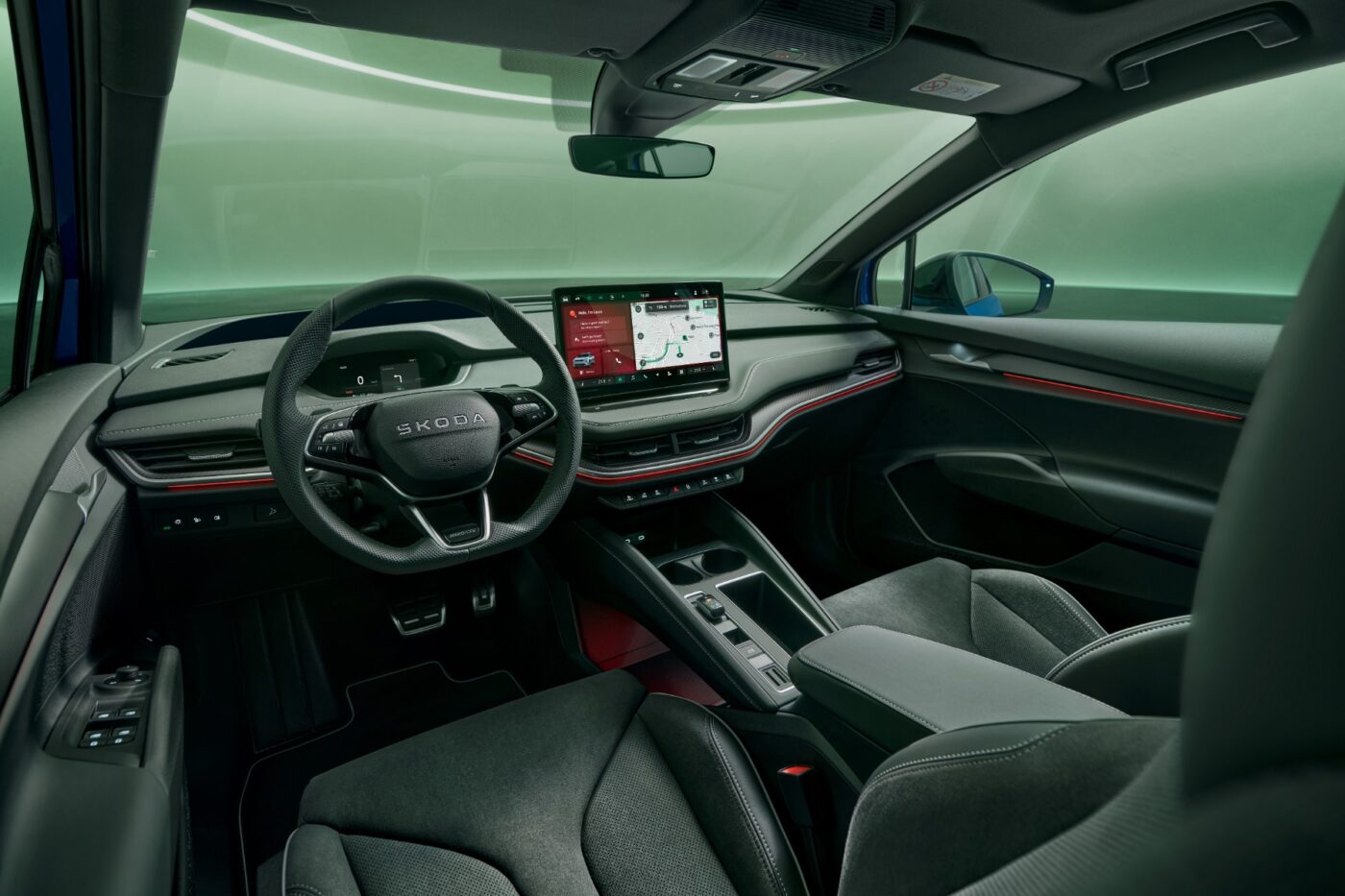
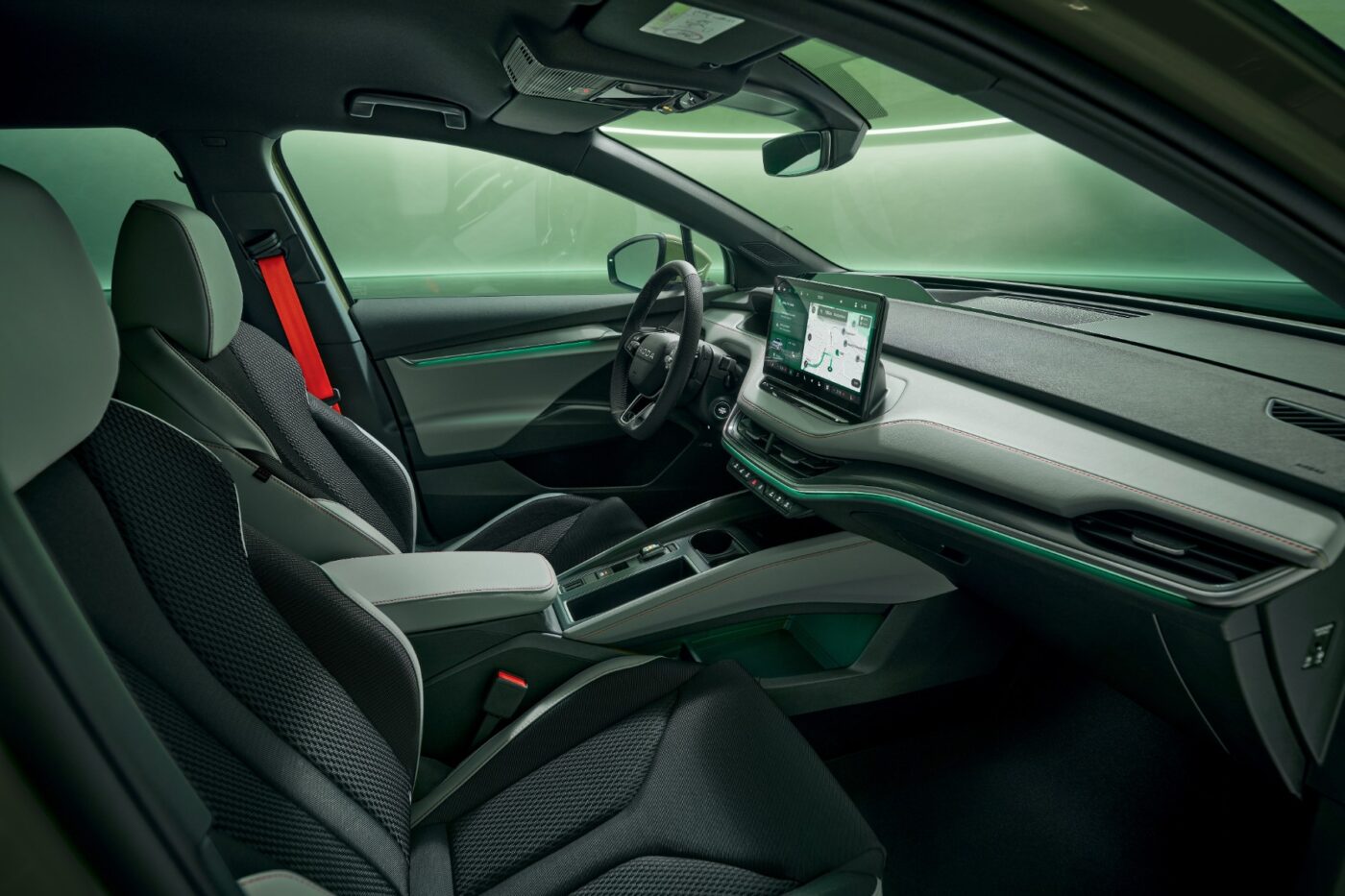
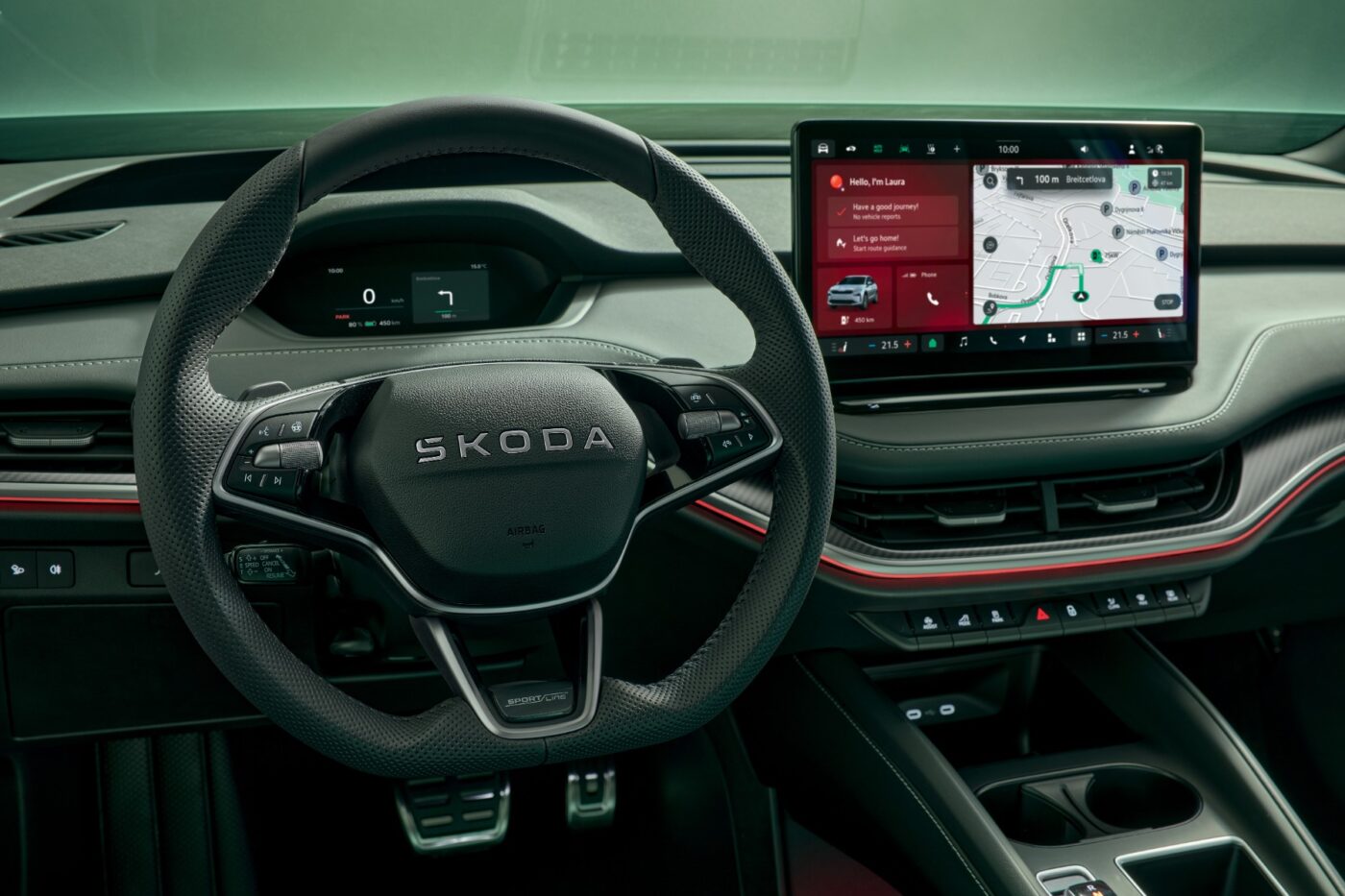
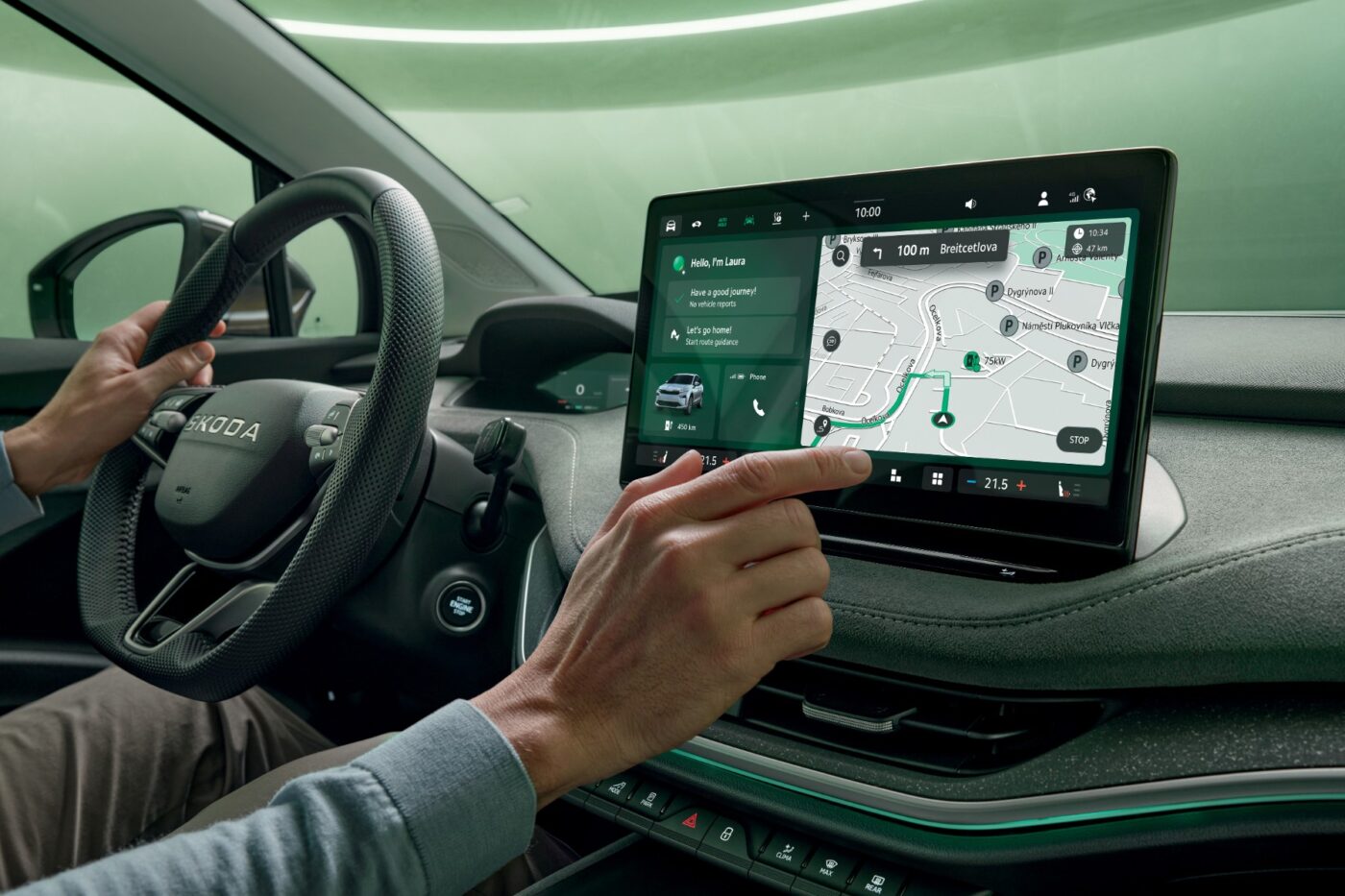
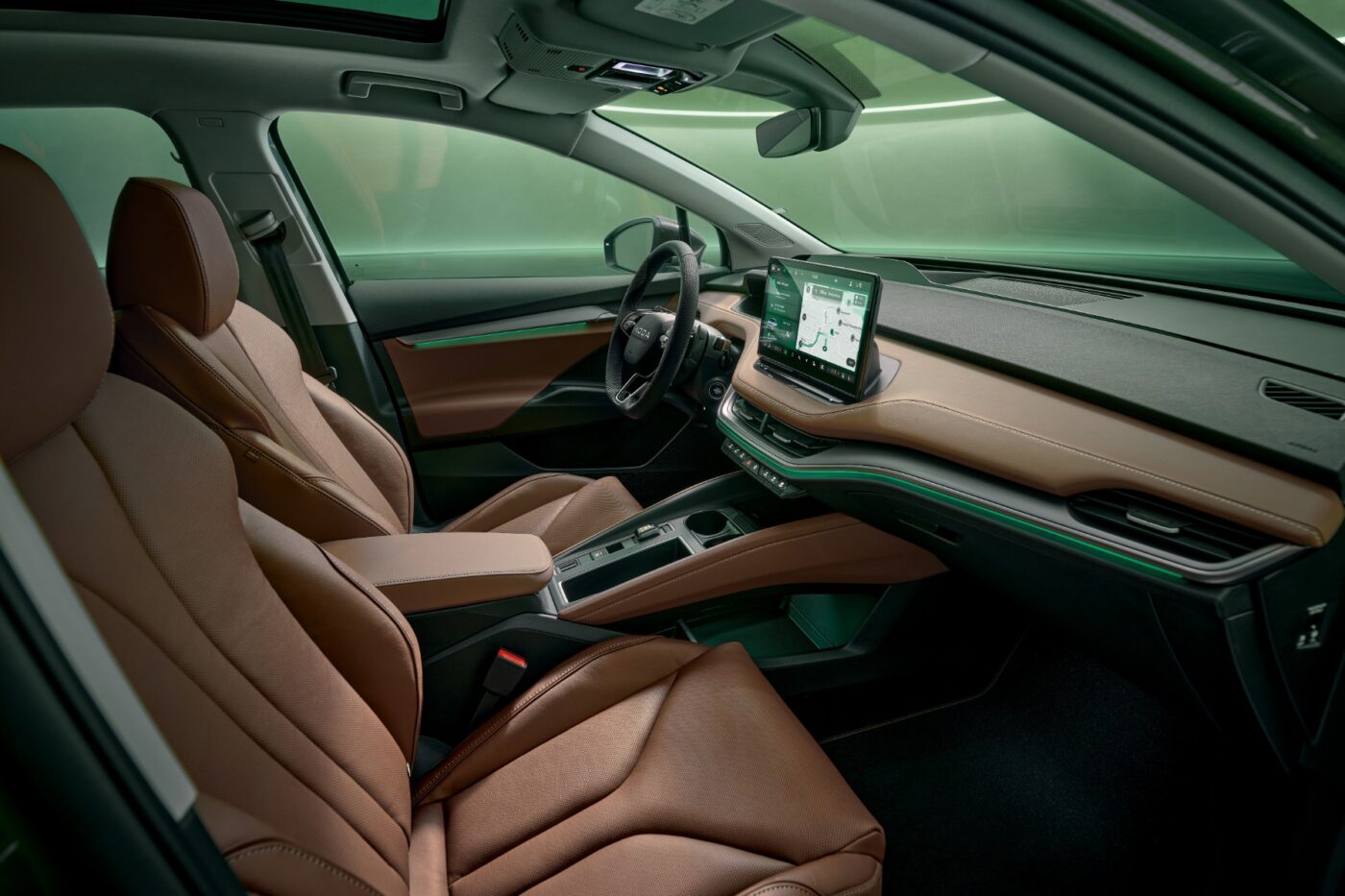
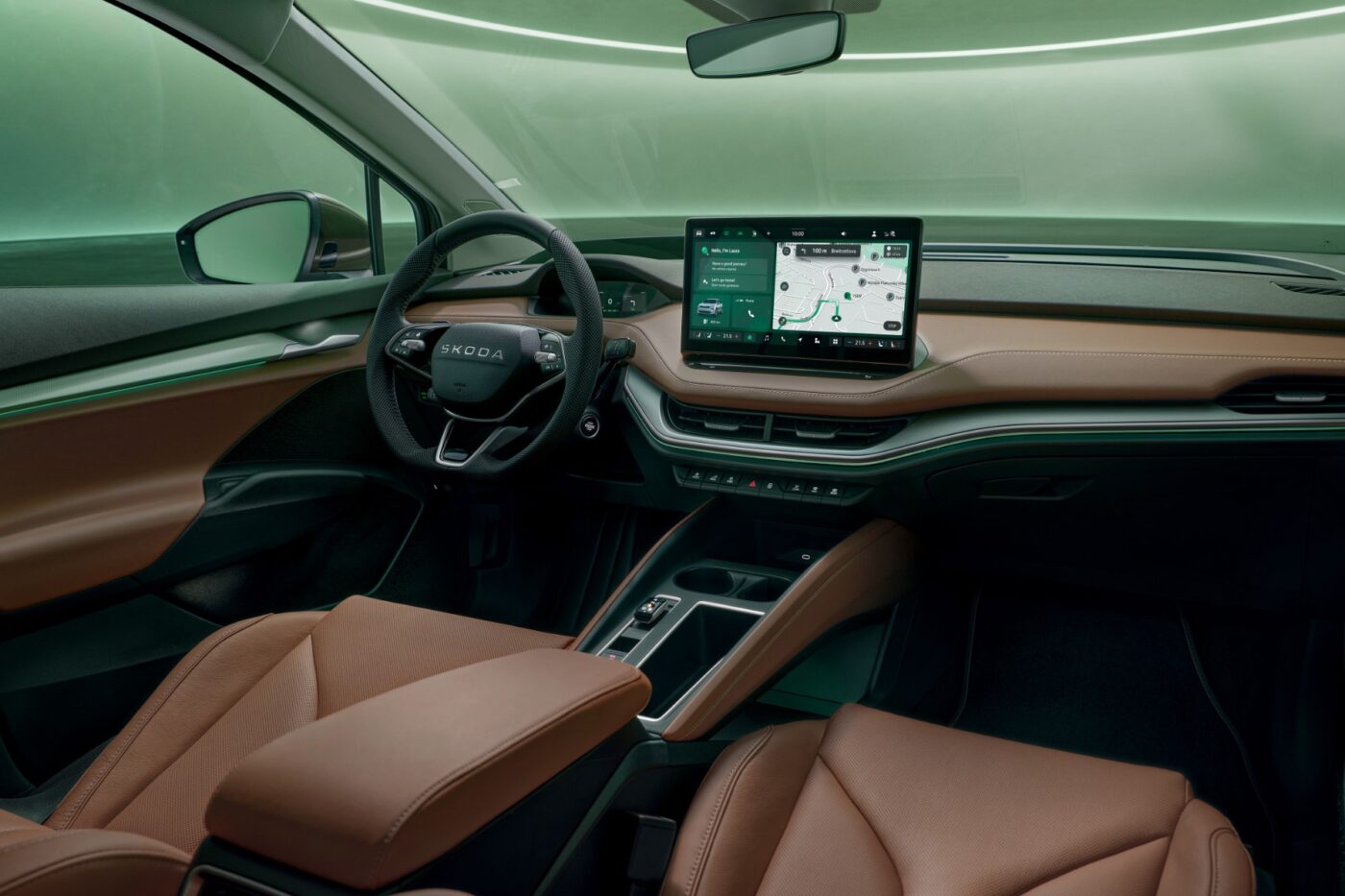
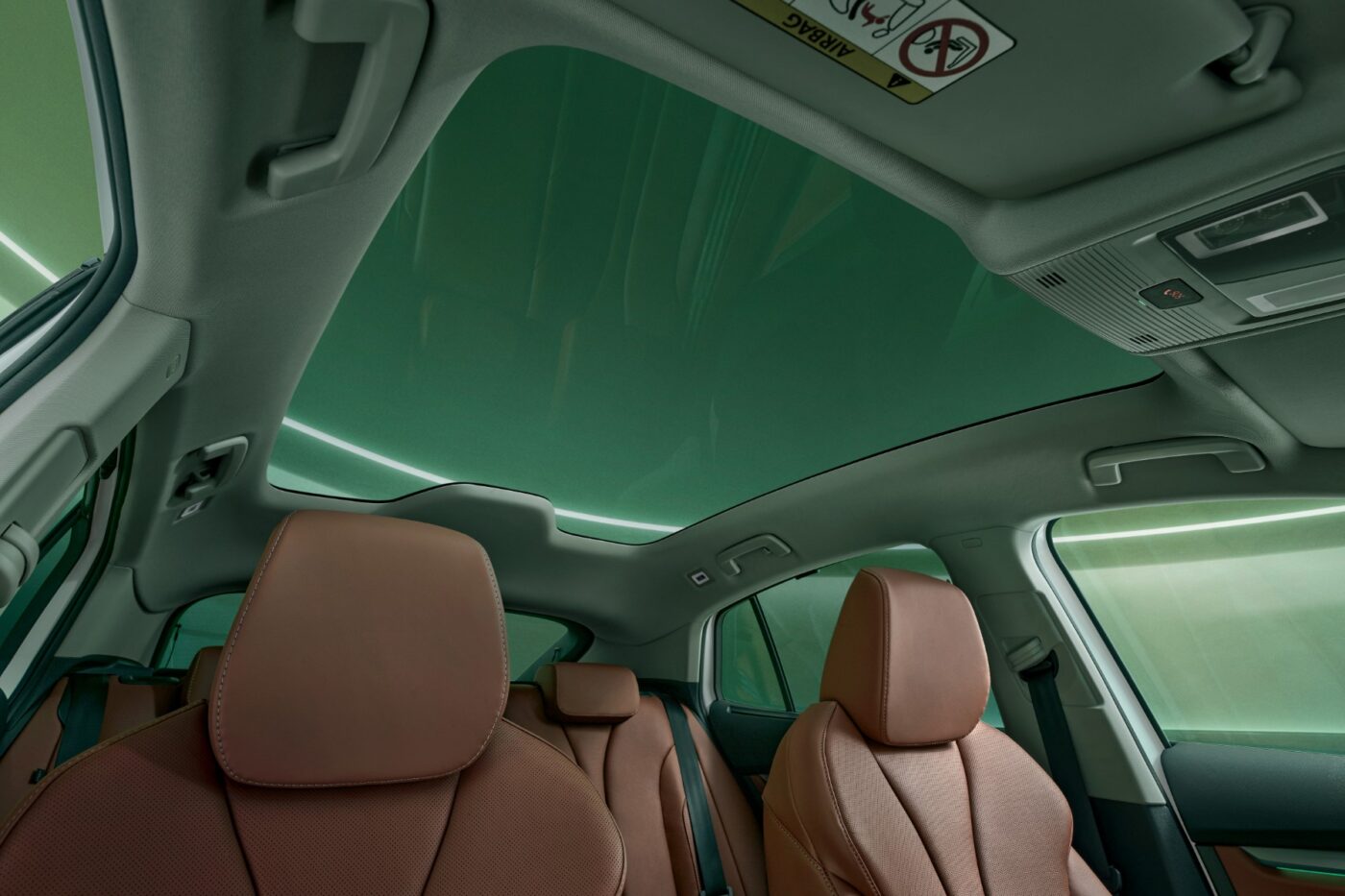
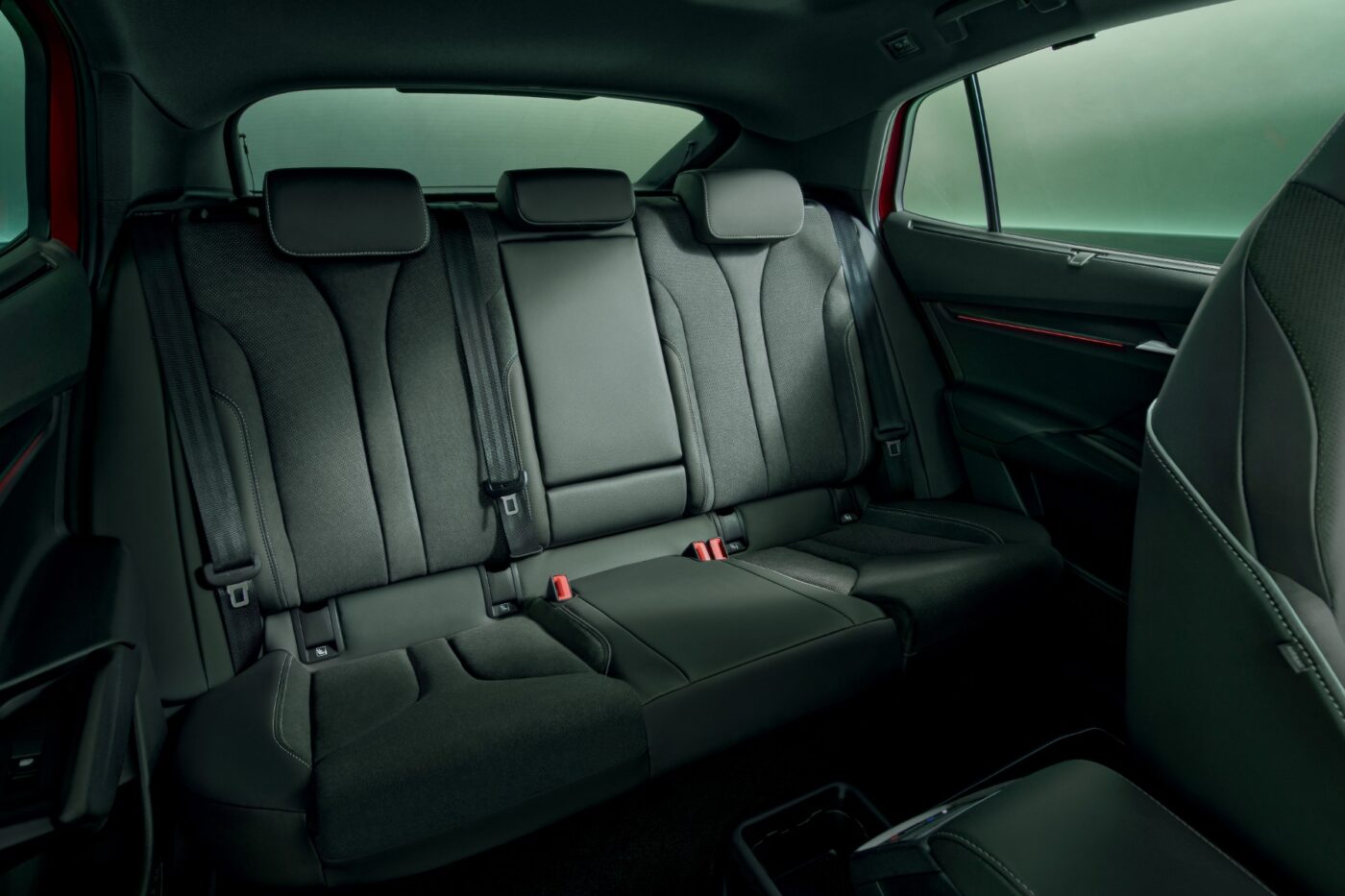
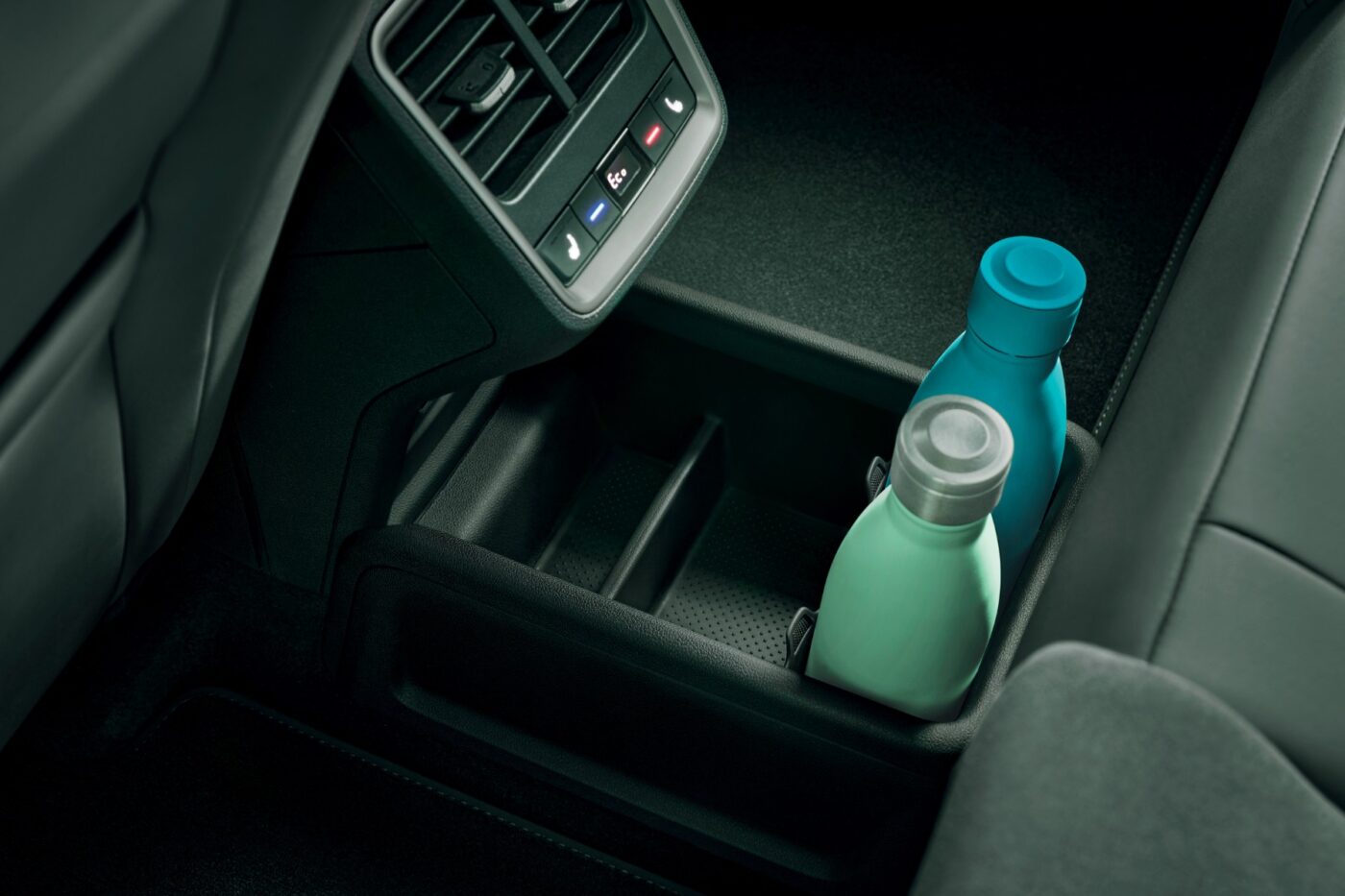
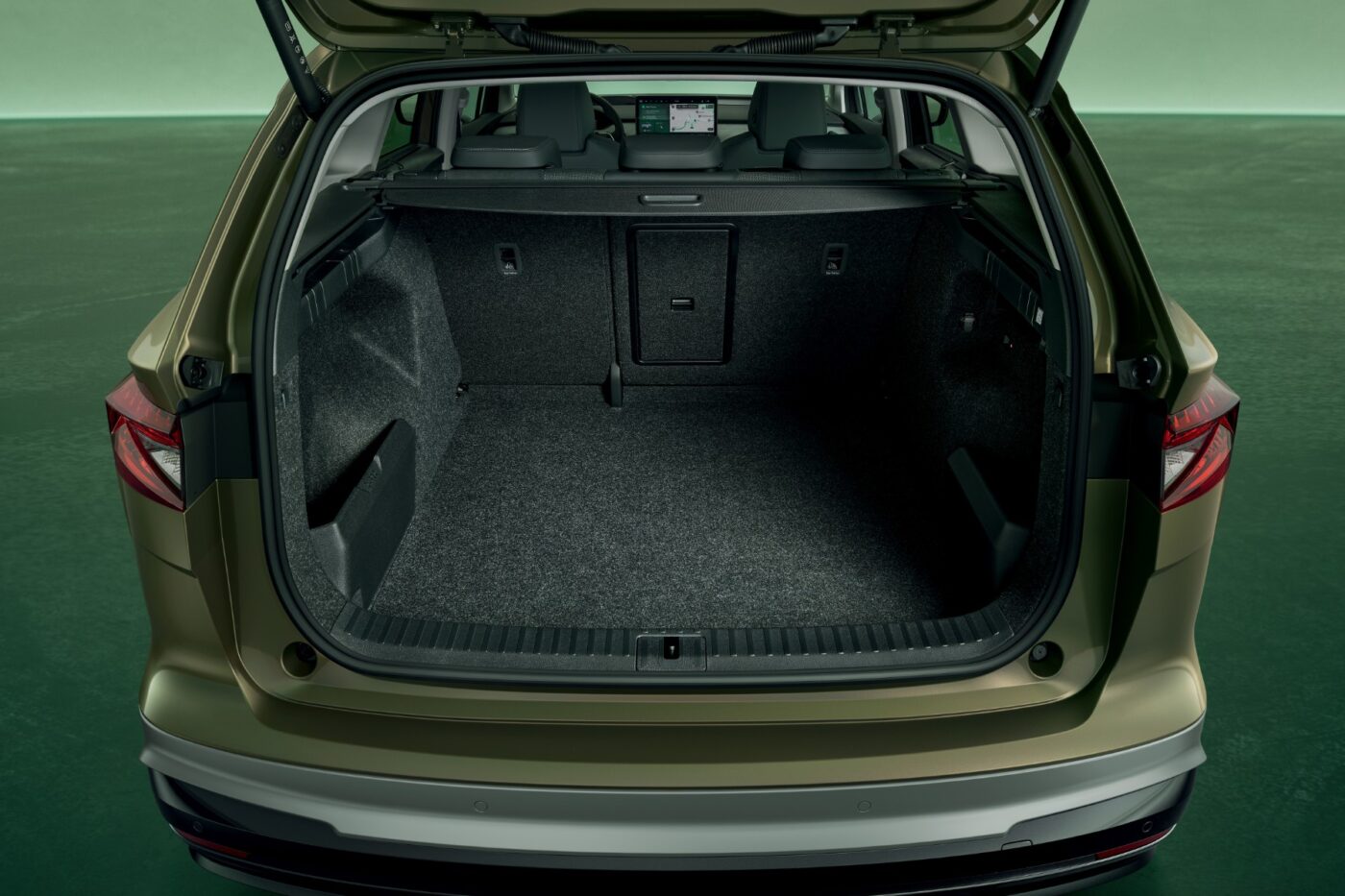
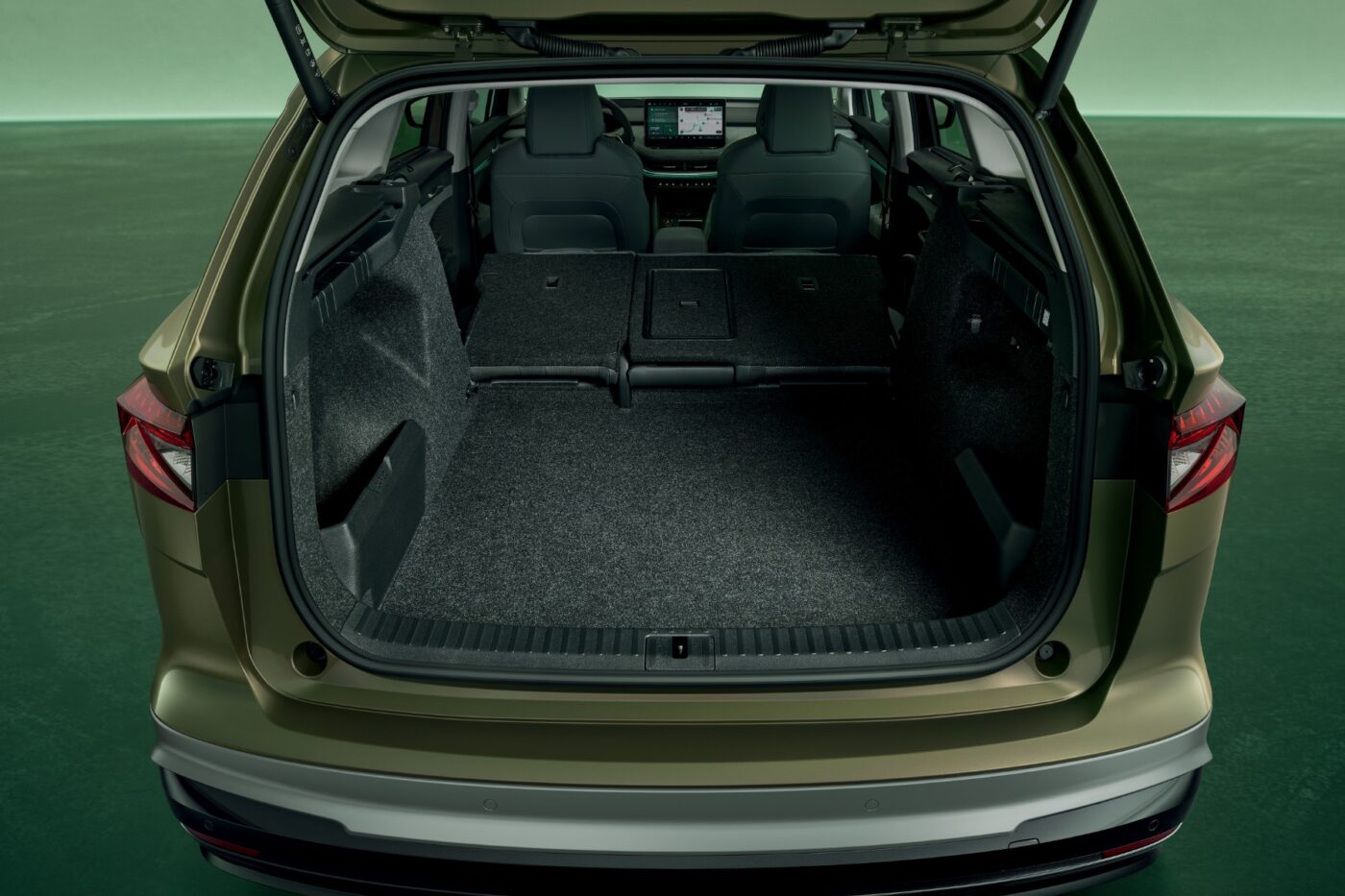
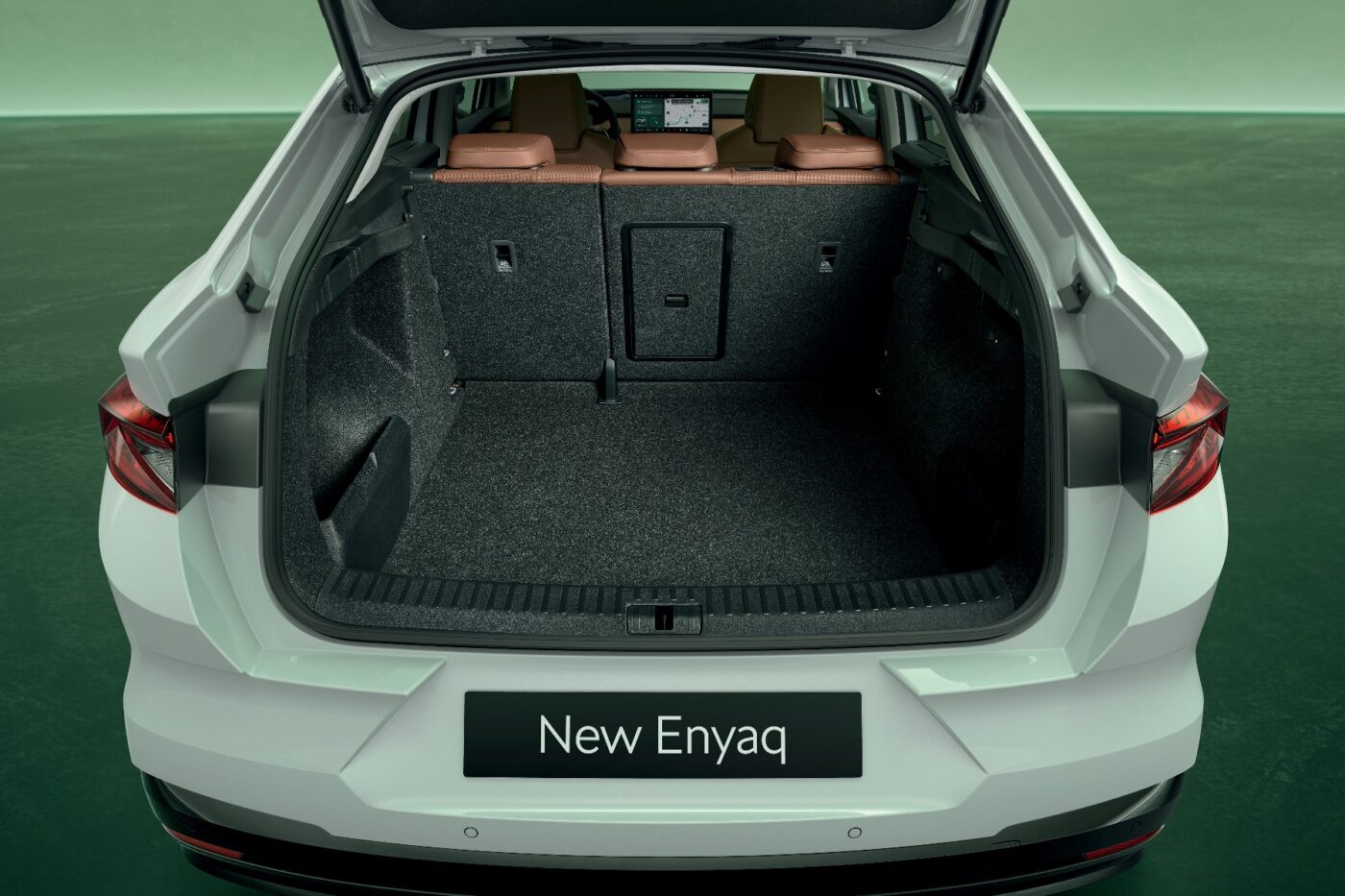
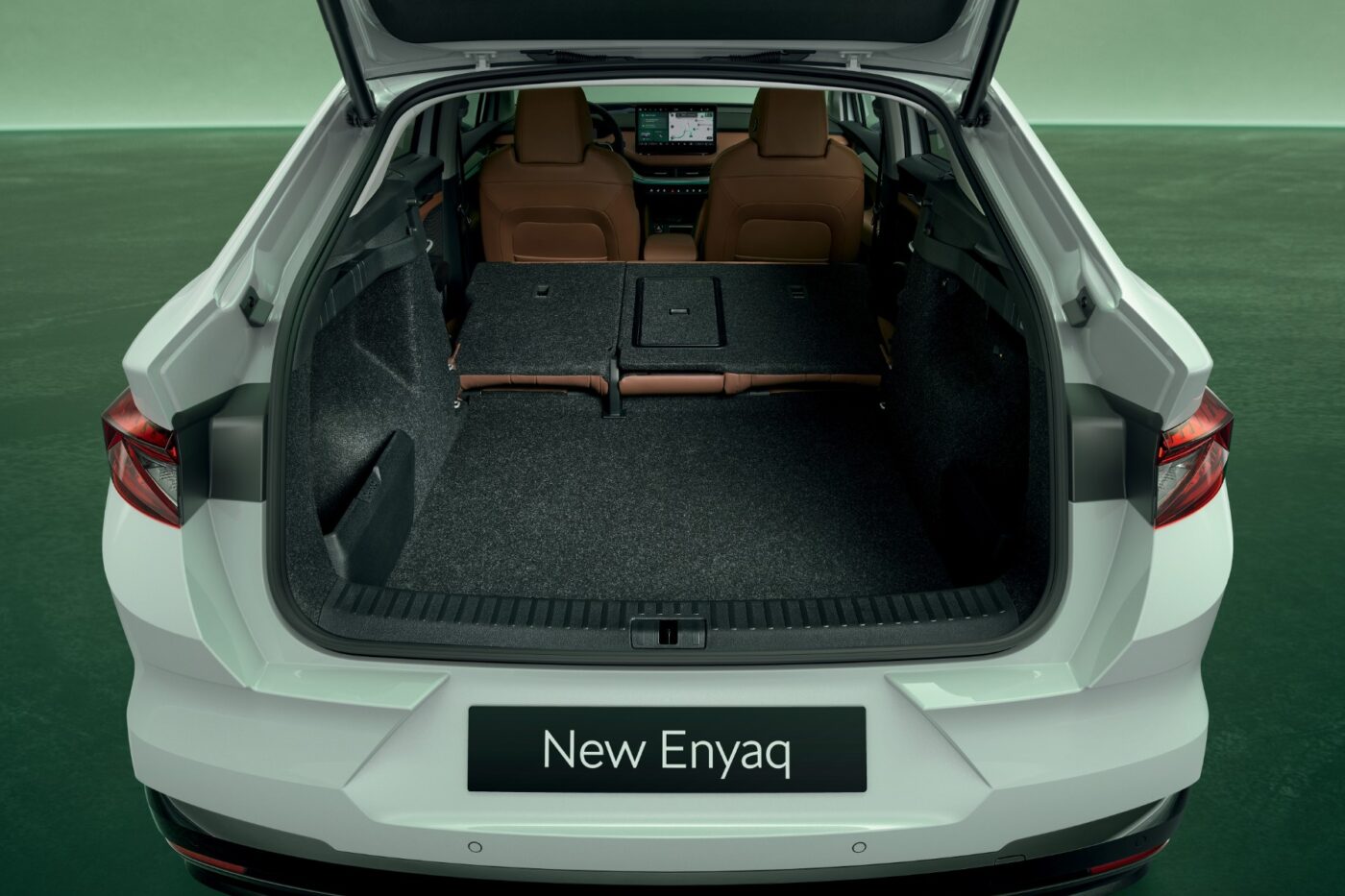
Incidentally, the Skoda logo on the interior has been scrapped; the lettering is now even on the steering wheel. Otherwise, the Enyaq remains true to its roots with the facelift. There is still a separate driver display integrated into the dashboard, whereas other MEB models have a free-standing unit behind the steering wheel. The driving mode is still selected in the centre console, not via a steering column lever. A 13-inch touchscreen is installed in the centre of the dashboard, with a head-up display available as an option.
Many customers have so far opted for the Enyaq due to its spaciousness; it offered and continues to offer a larger and, above all, higher boot than other MEB SUVs. It holds between 585 and 1,710 litres in the SUV and 570 to 1,610 litres in the SUV coupé. It puts the Enyaq on par with an ID.7 Tourer (605 to 1,714 litres), while the ID.4, which is comparable to the Enyaq, is smaller at 543-1,575 litres.
There is no change in the towing capacity: the two rear-wheel-drive models can tow a maximum of 1,200 kilograms (at an eight per cent gradient, at twelve per cent, it is only 1,000 kilograms), while the all-wheel drive model can tow an additional 200 kilograms – i.e. 1,400 and 1,200 kilograms respectively. The roof load is up to 75 kilograms.
Orders for the facelift of the Enyaq and Enyaq Coupé will start on Thursday, 9 January. Skoda did not reveal the exact prices in the short world premiere broadcast on YouTube – but they are expected to start at around 44,000 euros. It means that prices will likely remain virtually unchanged: Previously, the Enyaq started at 44,200 euros.

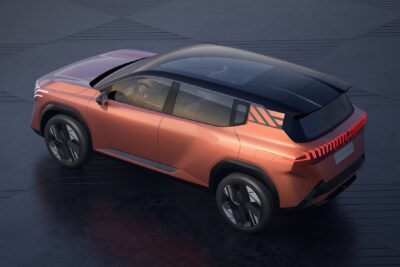
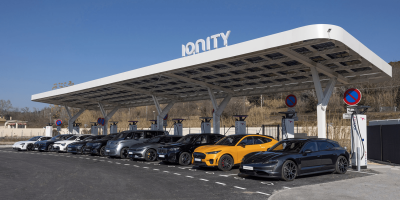
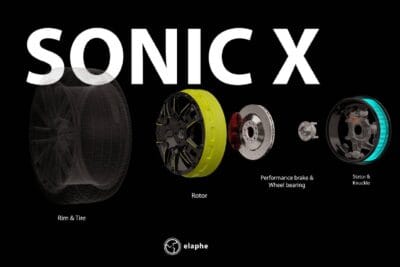
0 Comments